My time in Vienna to date has mostly been spent visiting the city’s many incredible museums and galleries – the city’s rich history and culture make it a paradise for art and culture lovers. But with so many museums to choose from, I put together this beginner’s guide to Vienna’s best museums and art galleries for the casual visitor who wants to add a touch of culture to their trip but are short on time. From world-famous masterpieces to modern art highlights, here’s how to experience the very best of Vienna’s vibrant art scene even if you aren’t that into art.
I spent a lot of whatever free time I had in the art museums, but Vienna has a lot to offer that I couldn’t fit into this one post because it was getting really unwieldy, so stay tuned for upcoming posts that will cover Vienna’s classical music and other cultural experiences that I think are worth checking out.
I visited Vienna with Austria Tourism, Scoot and Small Luxury Hotels of the World on a media trip. All opinions are my own.
The Best Museums in Vienna for Casual Visitors
Your main problem with visiting museums in Vienna isn’t what to visit, but how many museums exactly you can pack in because there are SO many amazing ones that covers the city’s rich heritage and amazing art. But if it’s your first time in Vienna or maybe you just want to dip your toe into the cultural waters, I’ve narrowed it down to the museums that I think are must-see.
A note that on this media trip we were given some free time to explore, but essentially I had about 1.5 afternoons to do check out museums, so as much as I would have wanted to see everything, this is what I managed to cover. There are a surprising amount of things to do in Vienna beyond the museums, like checking out its classical music and other cultural highlights!
Kunsthistorisches Museum: Your One Must-Visit If Short on Time
According to my walking tour guide, if you have time for just one museum in Vienna, make it the Kunsthistorisches Museum Wien. This grand museum covers history and art with a huge collection spanning 5 millenia, not unlike the more famous British Museum. Standing tall at the Maria-Theresien Platz and mirroring the Naturhistorisches Museum Wien (Natural History Museum) across the plaza, you can cover a lot of cultural ground here.
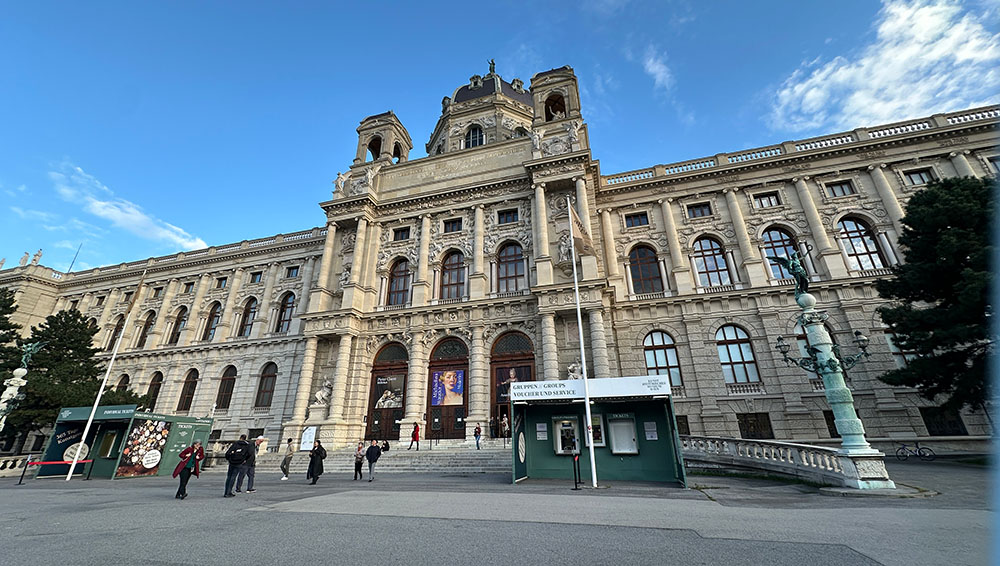
The architecture is of course pretty spectacular inside and out. The moment you step foot into the museum, you’re greeted with a beautiful grand hallway and staircase connecting the Ground Floor and Floor 1. You’ll see a lot of tourists taking photos here and dining at the cafe – another spot you can check out is up on Floor 2 where you get a closer look at the underside of the decorated ceiling and cupola. Klimt is one of several prominent Austrian artists of that era to paint this entrance way.
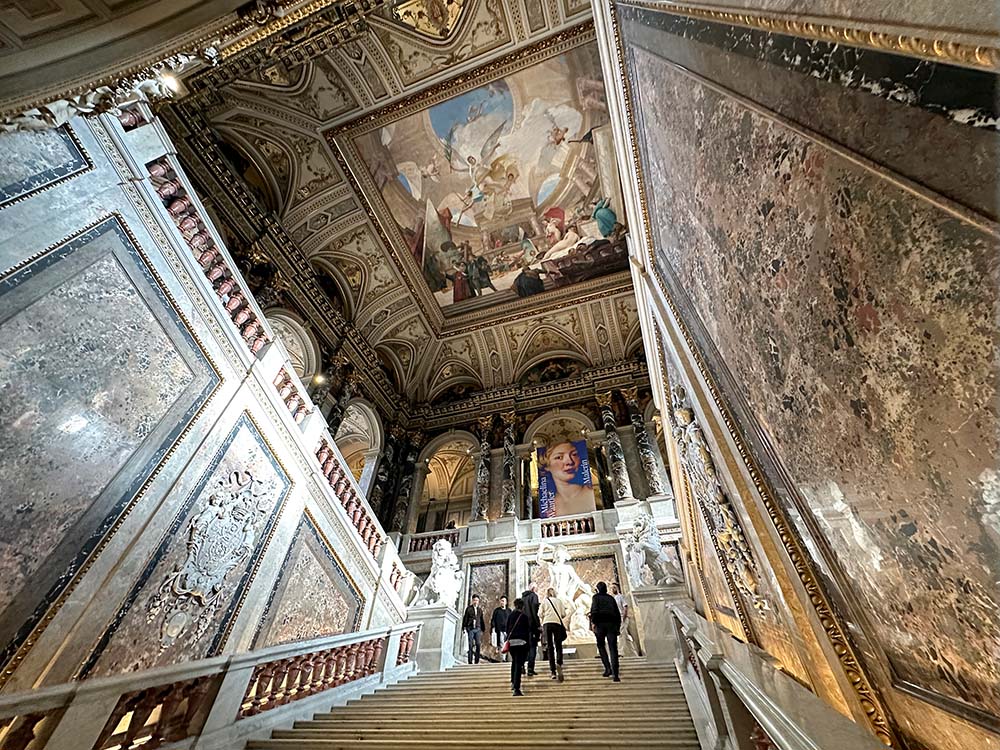
Exhibitions-wise you can lose yourself in these vast collections that were once owned by the Hapsburg family. The Picture Gallery covers most of Floor 1 and has all sorts of famous European Baroque and Renaissance artists like Vermeer and Caravaggio. There are write-ups about the artworks and couches in most galleries so you can take a rest if you need to.
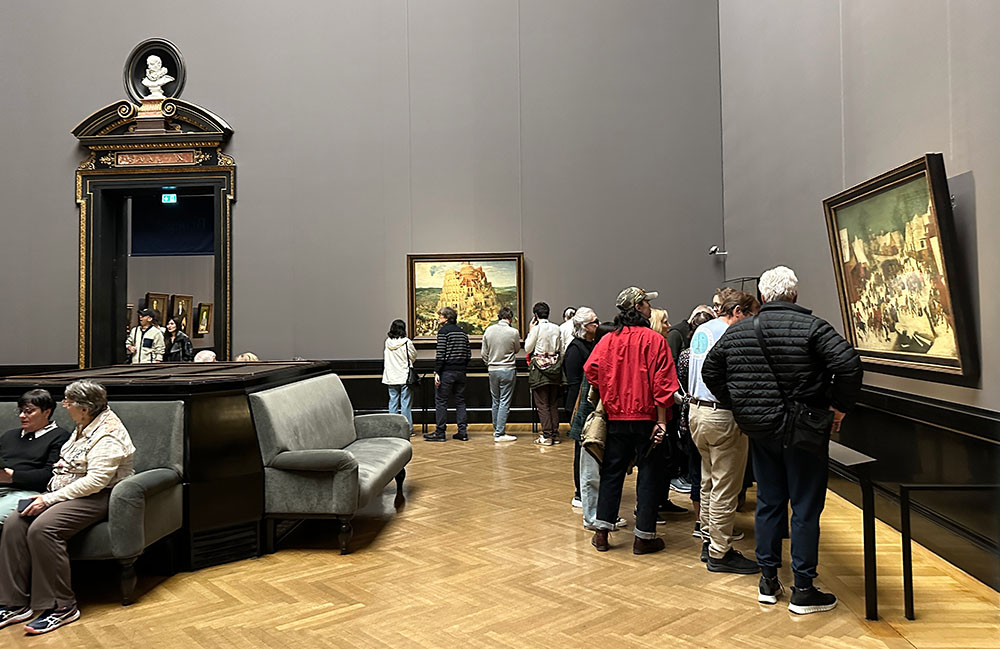
Of note is the Best of Bruegel – a collection of 12 paintings by Pieter Bruegel the Elder, a notable Renaissance Dutch painter from the 1500s who did a lot of landscape paintings of the common peasant folk. This is the largest collection of Bruegel works as there are only about 40 pcs left in total and most are scattered around various galleries.
I’m not usually that interested in this sort of art but the man put in so much detail into his canvases which is quite impressive – check out the Inside Bruegel microsite on the museum website where they’ve taken super hi-res shots of his paintings and you can zoom in so close! We got to be ‘inside’ the painting when they projected this work on the wall at the Ars Electronica Centre in Linz.
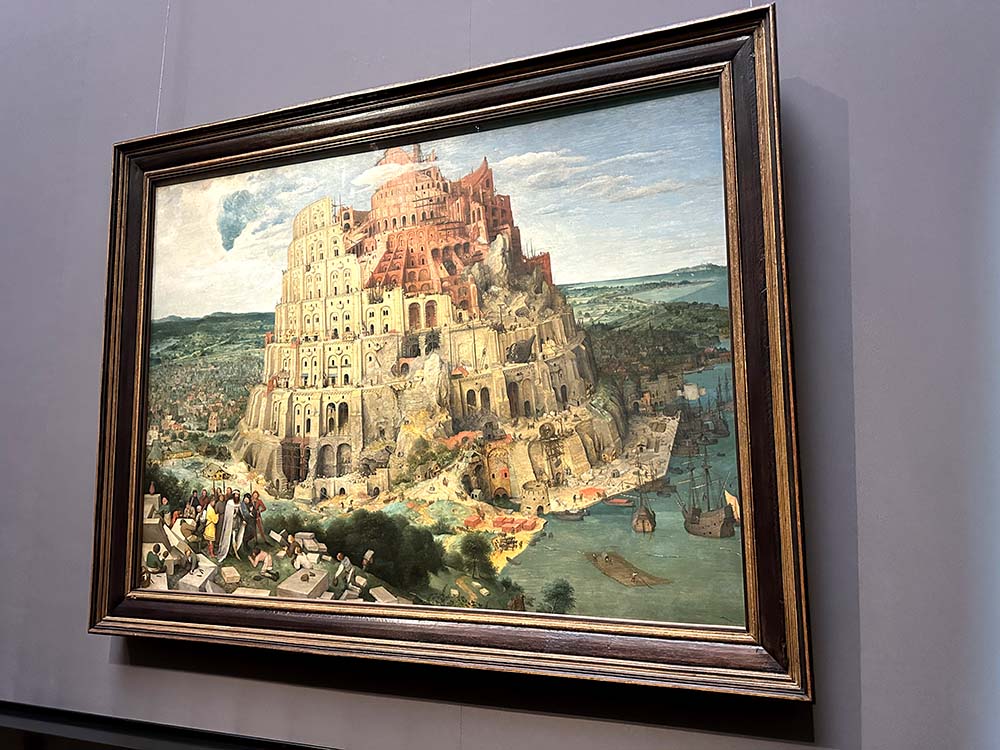
I found my way to the Mezzanine Level 0.5 thinking about making a short stop in the Kunstkammer which focuses on the objects other than paintings that various Hapsburgs collected over the centuries, but I ended up spending a lot more time here than expected because there are over 2,200 items in the collection and many of these are very intricate curiosities that range from exquisitely carved jewellery and display pieces to table-top games and other knick knacks.
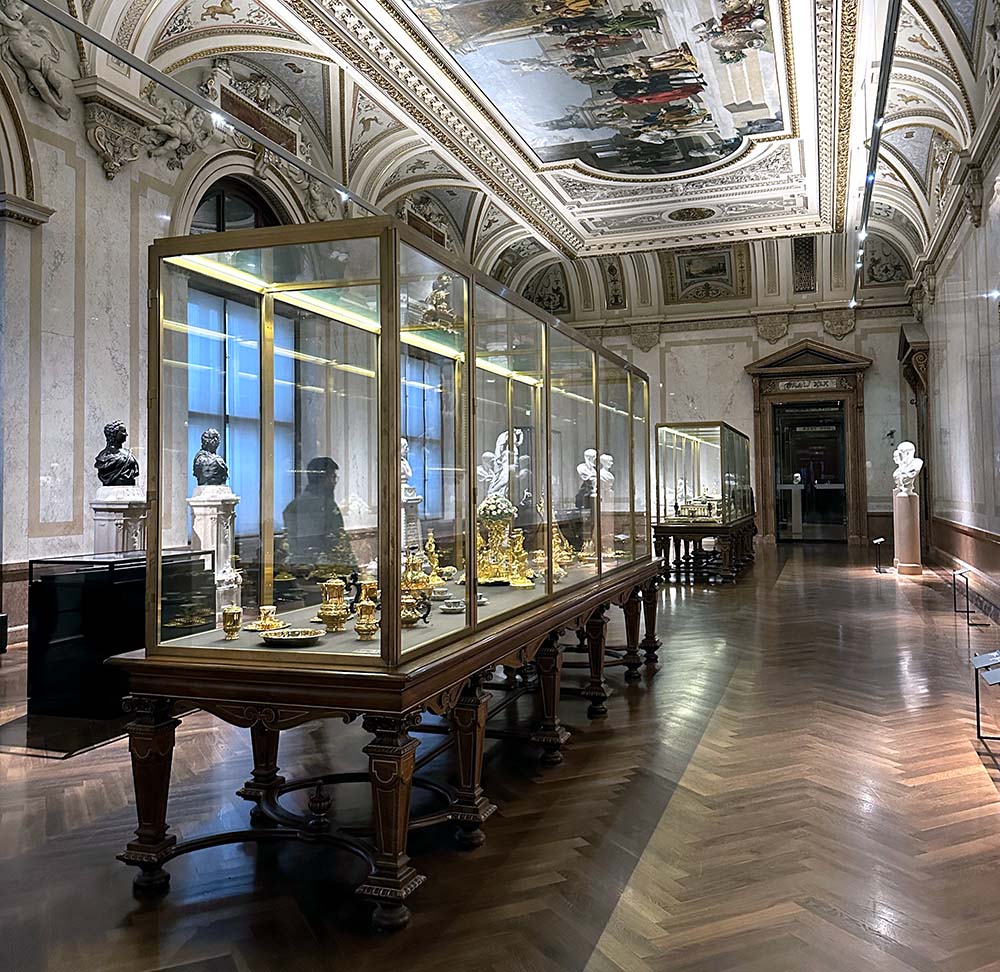
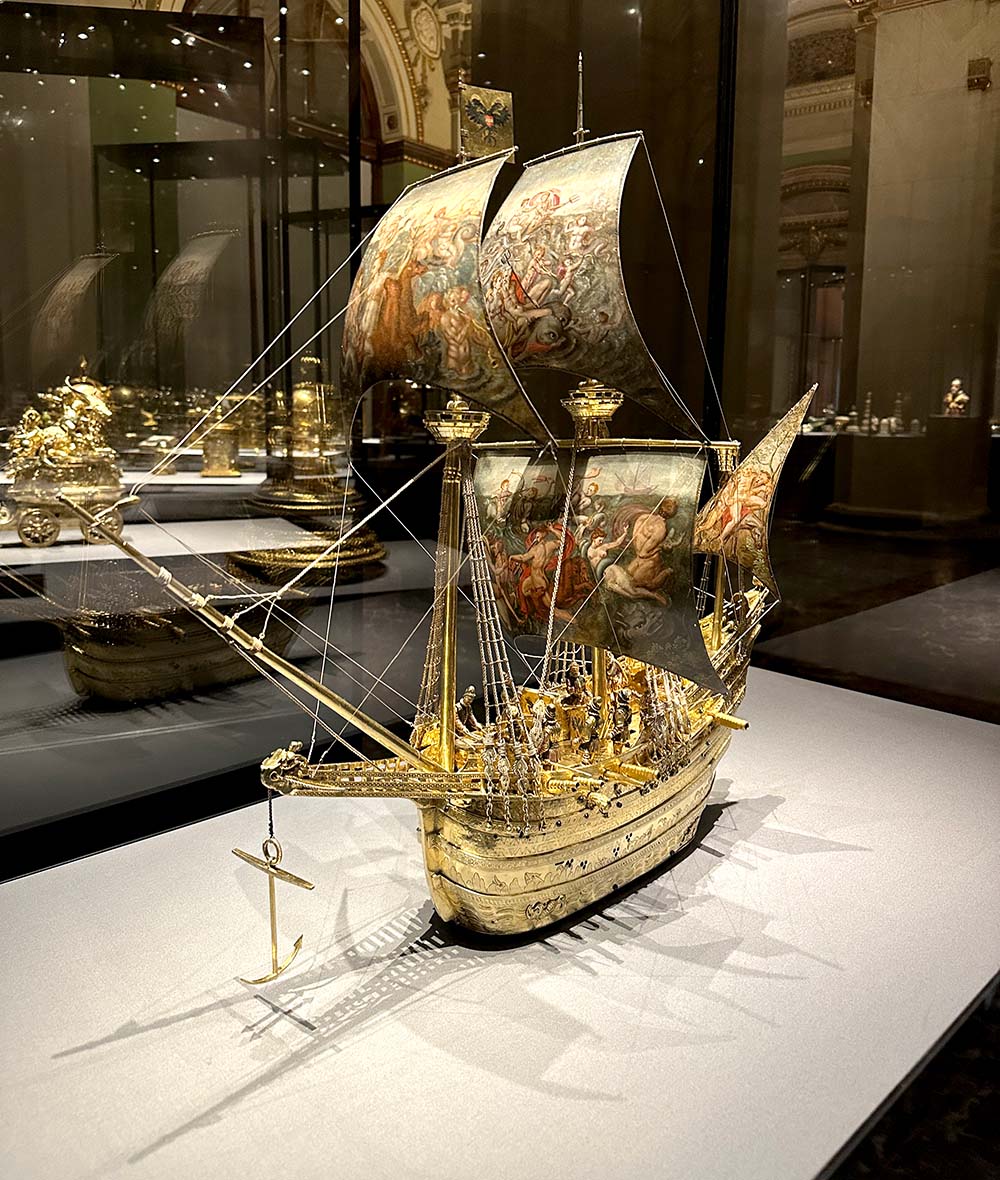
The Kunsthistoriches Museum Vienna ticks off a lot of boxes for most visitors with history, art and architecture all in one beautiful building so I can see why it is considered a must-visit.
Kunsthistoriches Museum Wien [Google maps]. Tickets cost 22 Euros if you buy online (24 Euros at the door), kids under 19 go free – I used my Vienna Flexi Pass here. Open daily 10am – 6pm (till 9pm on Thurs).
Leopold Museum: Get a taste of Vienna’s Modern Art Scene
I spent most of my inaugural visit in Vienna at the MuseumsQuartier or the Museum Quarter MQ, which is home to a number of prominent museums worth checking out. What was once 18th century Viennese Imperial Stables reopened in 2001 as one of the largest contemporary arts and culture complexes in the world with over 60 cultural institutions around the Museumplatz.
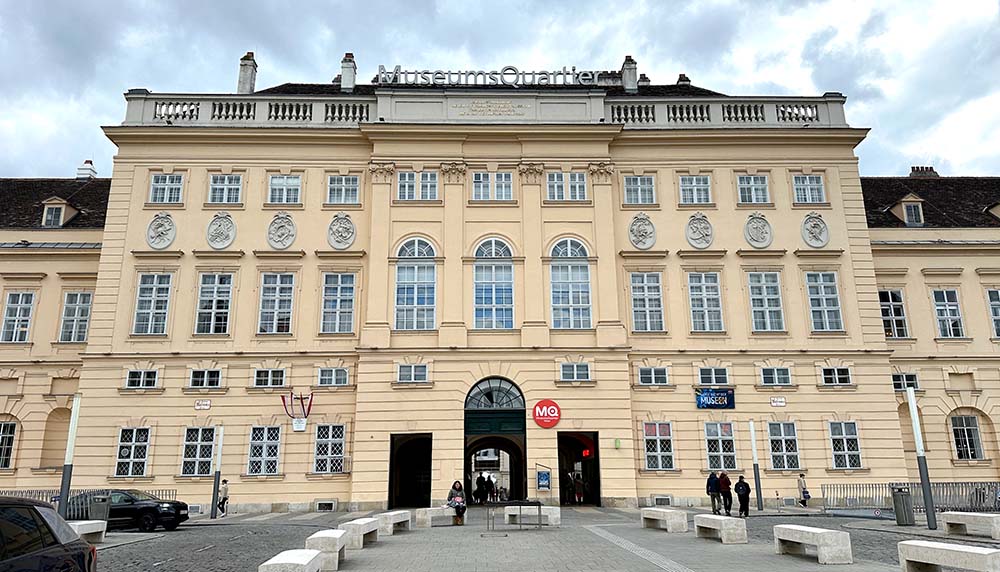
We were given a Fab 5 Art Package which is a combined ticket that lets you visit 5 of the museums in the MQ, but alas we only had Monday to do so – many museums in Vienna are closed then. I had initially wanted to visit the Modern Art Museum mumok, but in the end I visited the Leopold Museum which focuses on Austrian Art around the 1850-1950s.
The collection was built by the Leopolds, a pair of art-loving doctors who amassed over 8,000 works in a span of 50 years, including the largest Egon Schiele collection with over 220 of his works – Schiele is one of the most prominent Austrian modern artists.
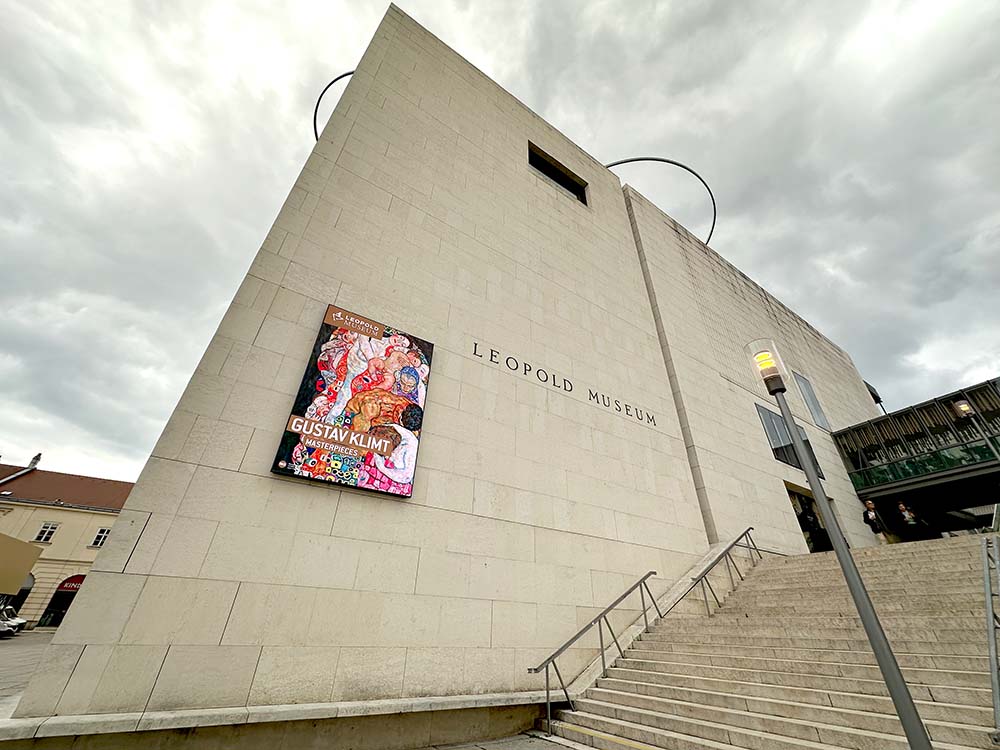
We took the lift up to see the permanent exhibition Vienna 1900, the birth of Modernism which delves into one of the golden periods of art in Austria, where a group of young artists broke away from the traditional art style of the time to found the Vienna Secession. The artworks here really spoke to me and I found other new names to look out for like Koloman Moser and Josef Hoffman.
It turns out Secession happened around the same time that Art Nouveau was in vogue – and I discovered and loved Mucha’s work when I was in Prague back in 2013 so perhaps I shouldn’t be surprised by my own interest in Secession – more on that below!
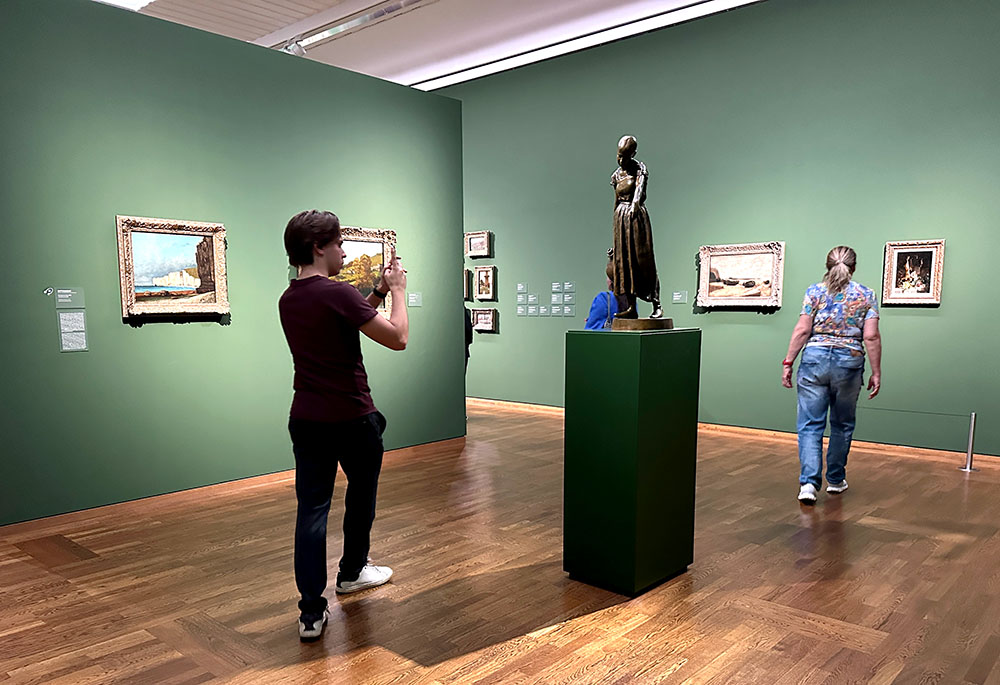
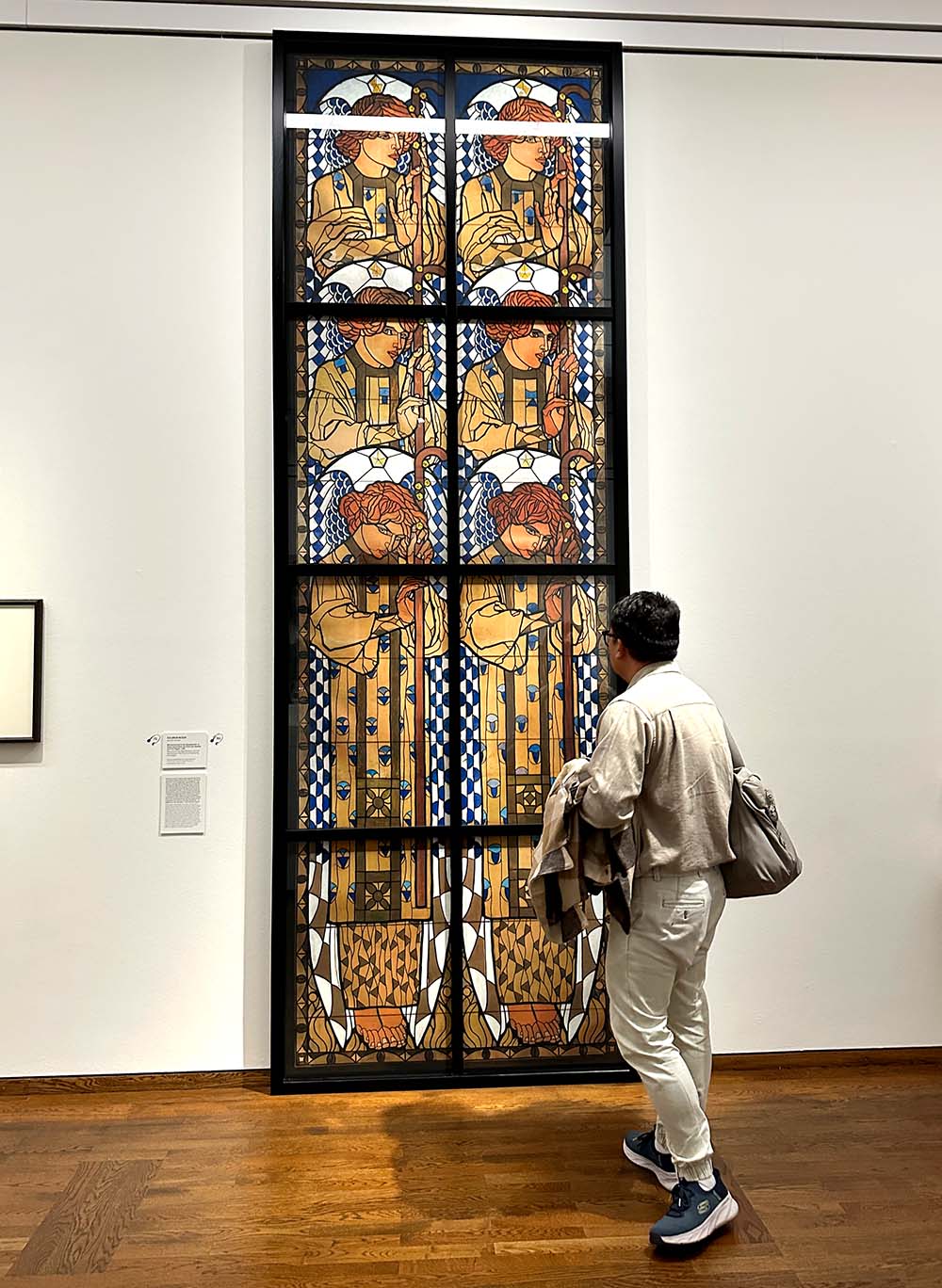
The main highlight for me here was seeing the Gustav Klimt work Death and Life – I’ll talk more about him in the Belvedere section because that features his most iconic work, but Death and Life is also pretty well-known. It was one of the works that I saw back in 2016 on my first visit to Vienna! Egon Schiele’s style doesn’t speak to me as much though he does have very distinctive portraiture.
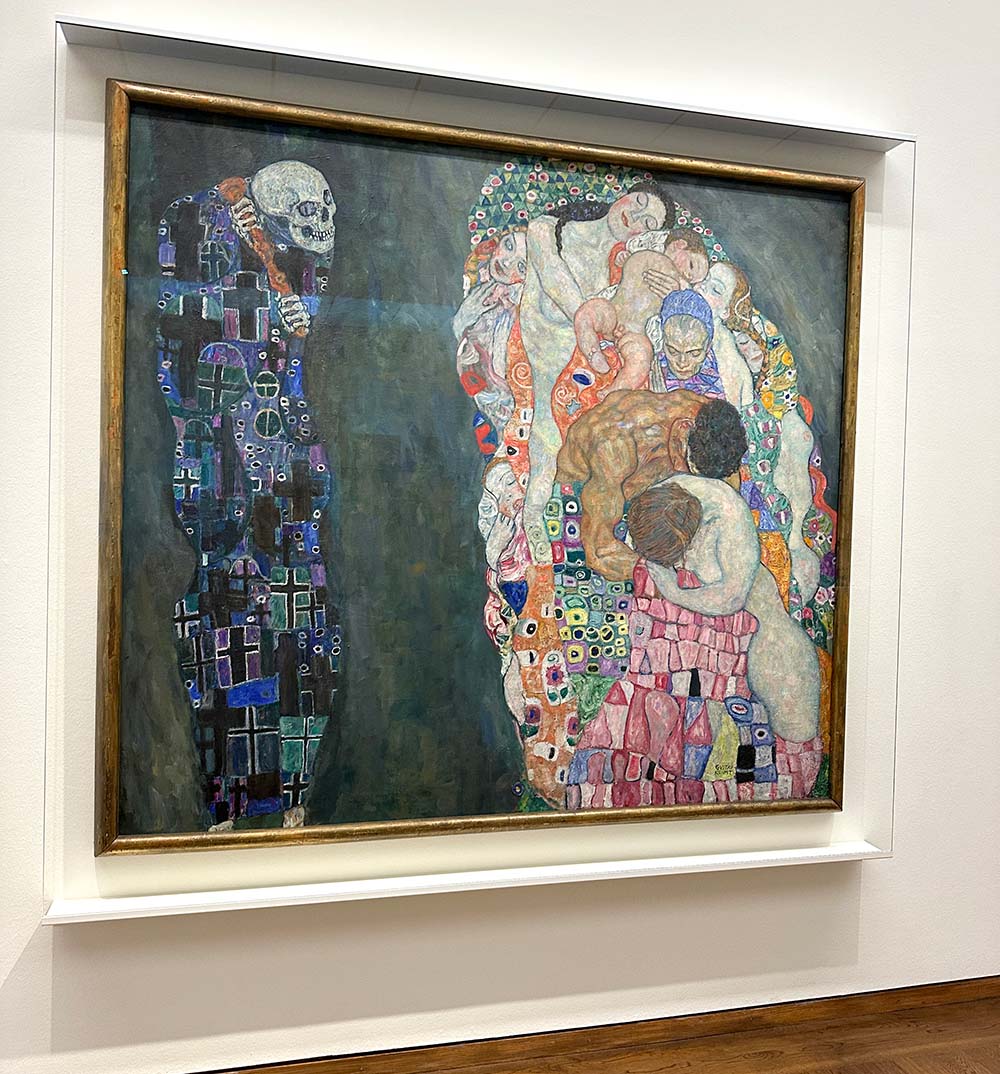
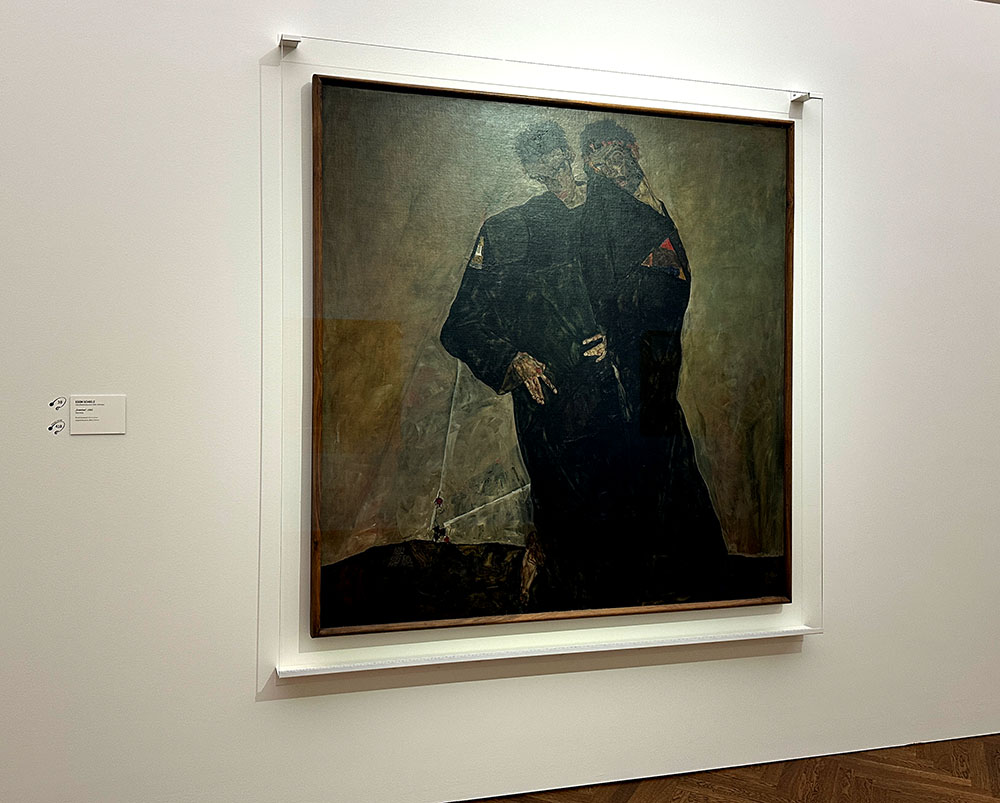
The upstairs level had a mix of artworks as well as arts and craft items like glasses, pottery and metalwork. We headed down to the basement where there were special exhibitions with more art on display. There was a cafe on the upper floor but we didn’t have time to stop in there.
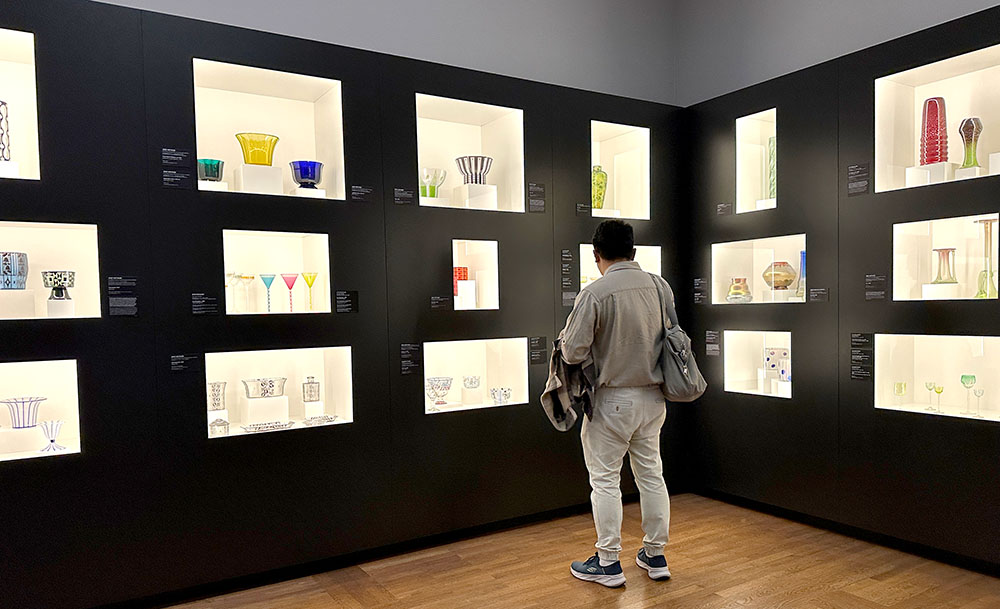
If you want to see some of Austrian art’s most prominent names, the Leopold Museum is a good place to start. It’s in the MQ so you have lots of other options nearby if you want to check out other museums – more on that below.
Leopold Museum [Google maps]. Tickets cost 19 Euros if you buy online – I used my Fab 5 Combined Ticket here which was 39 Euros for 5 museums, but you can use your Vienna Flexi Pass as well. Open Wed-Mon 10am – 6pm (Closed on Tues).
The Belvedere: Head to the Upper Belvedere Palace for Klimt’s Famous Kiss
Besides seeing Vienna’s beautiful art galleries, I did want to visit at least one palace in my time there as I’d never found the time to do so. The Schonnbrunn Palace was on the list but it was a bit too far out for our tight schedules, so I opted to cover art and palaces all in one go at the Schloss Belvedere, a spectacular Baroque style palace where the rooms have been converted into an art gallery, most notably for the largest Gustav Klimt artwork collection and his most famous work called The Kiss.
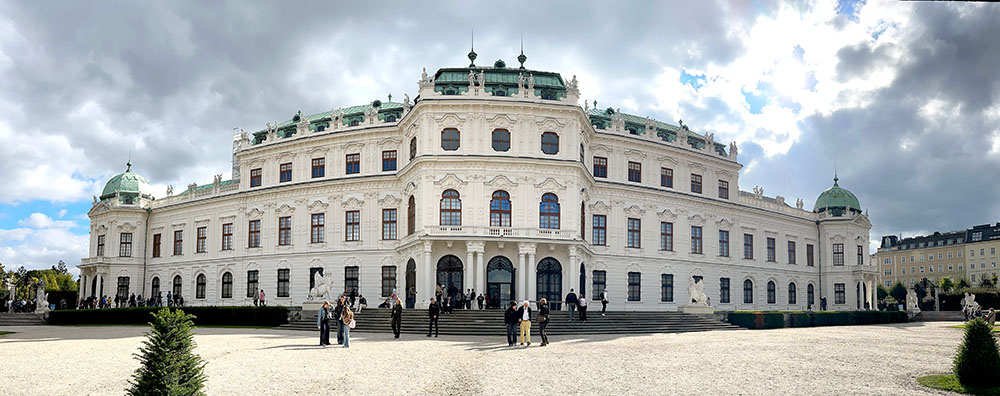
The Belvedere Palace actually consists of 2 buildings – the Upper Belvedere on top of the hill is where the main art collection Vienna 1880-1914 is located and where I headed. The Lower Belvedere is at the bottom of the slope where you can see the fancy rooms and stables that once housed Prince Eugene of Savoy. A manicured garden along the slope lies between the two buildings.
There is also the Belvedere 21, an art space that focuses on much more contemporary art – I visited this back in 2016 for an Ai WeiWei exhibition but not on this particular trip.
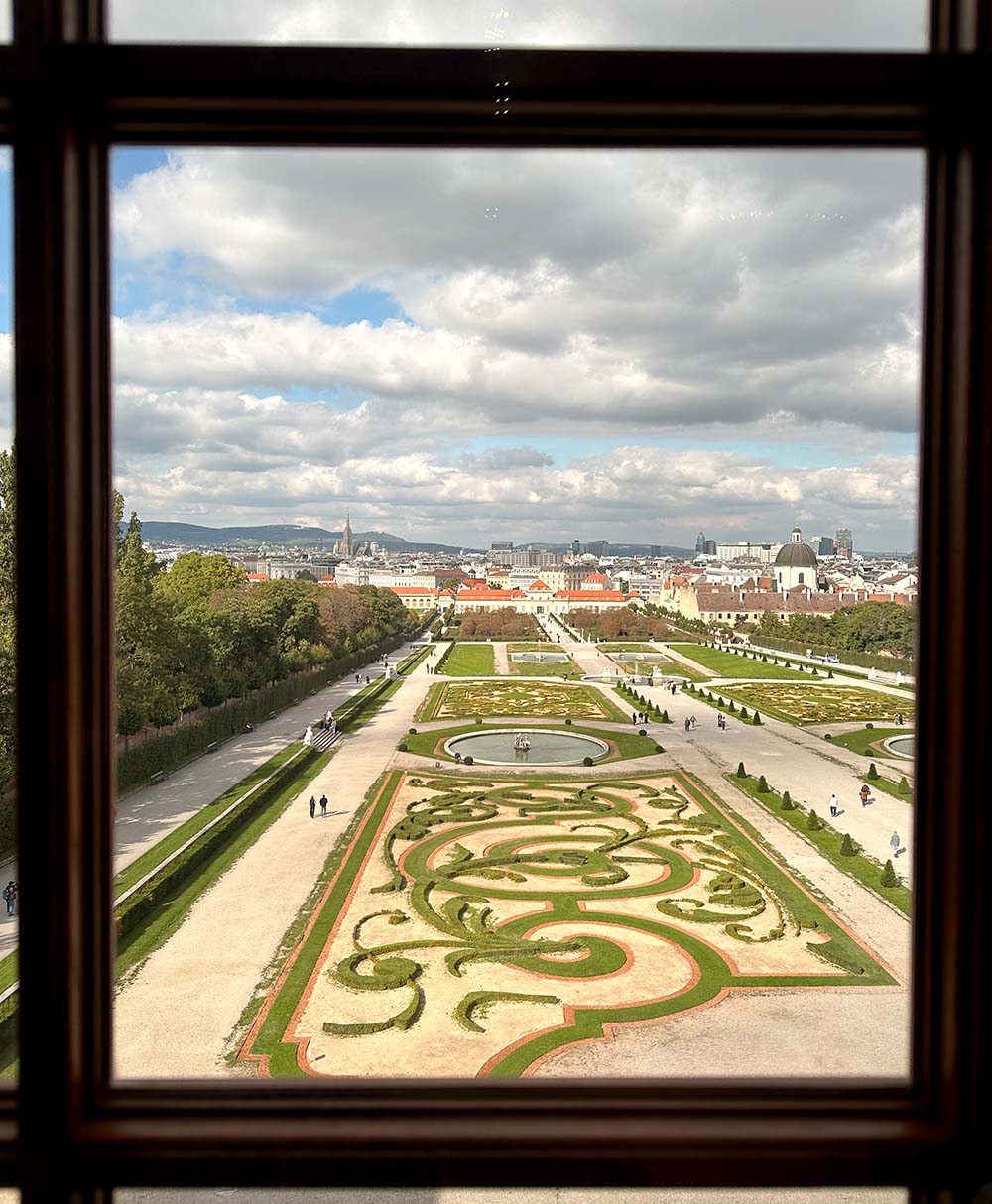
The rooms of the Upper Belevedere’s 2nd and 3rd floor have been converted into artwork galleries for the permanent exhibition Picture This! The Belvedere Collection from Cranach to Lassnig, which covers 800 years of works and wants to show how artists use art to respond to the events of different eras form the middle ages to the 1970s. Each room’s decor is also something to admire alongside the famous paintings that hang on its walls – I got very distracted by fancy ceilings and cornices.
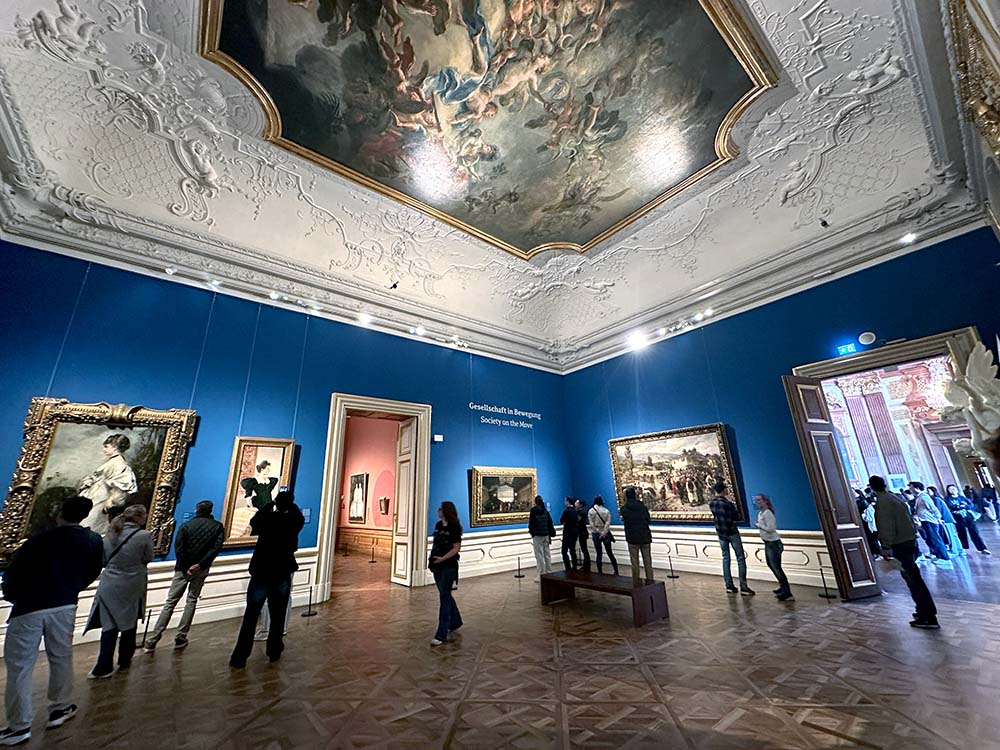
The Baroque Marble Hall is pretty spectacular with its high ceilings and fancy chandeliers. I like how in each room, there is another sign that tells you what the room was originally used for. There is even a window in one of the galleries that lets you peek into a very small chapel in the corner.
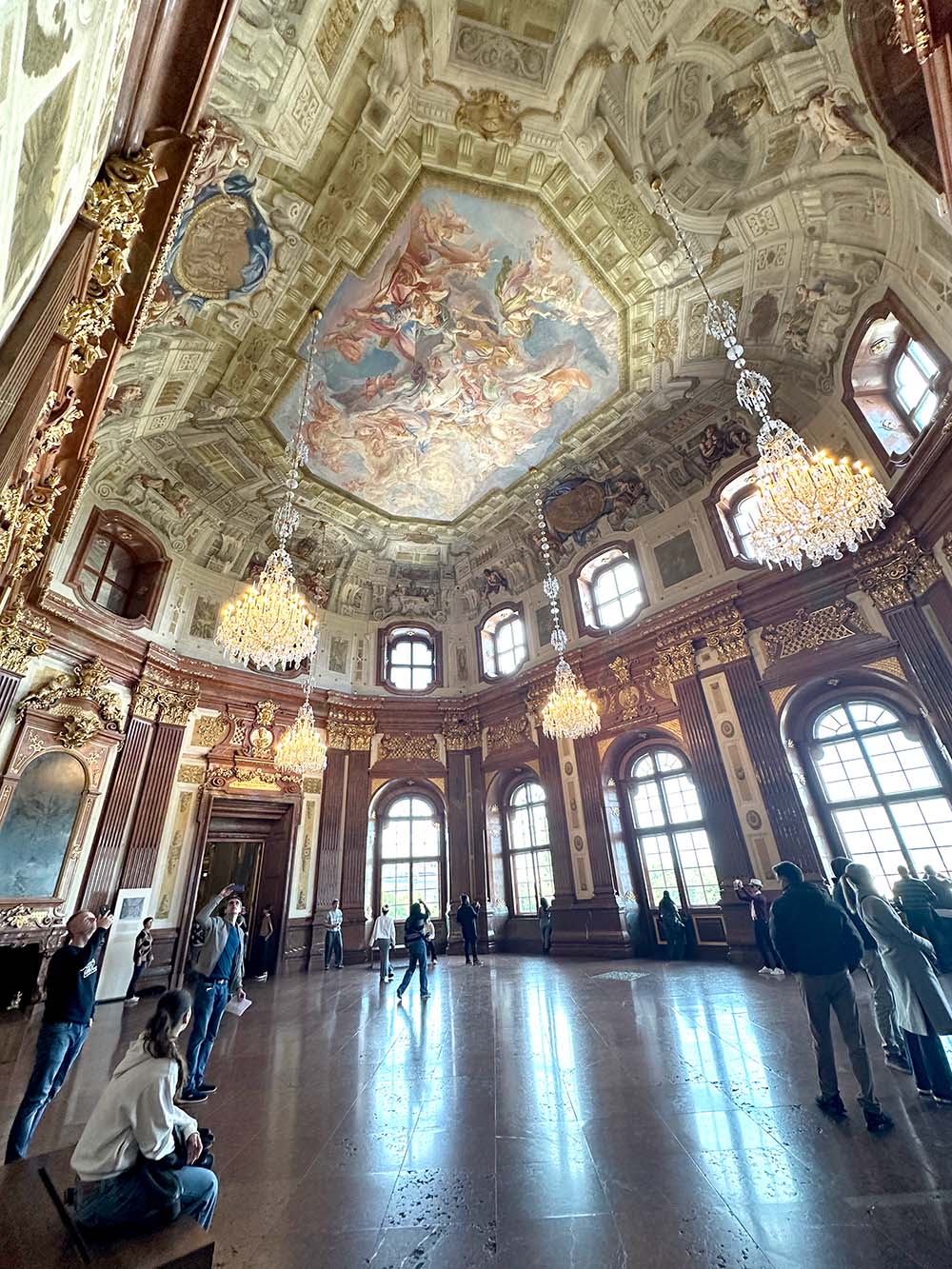
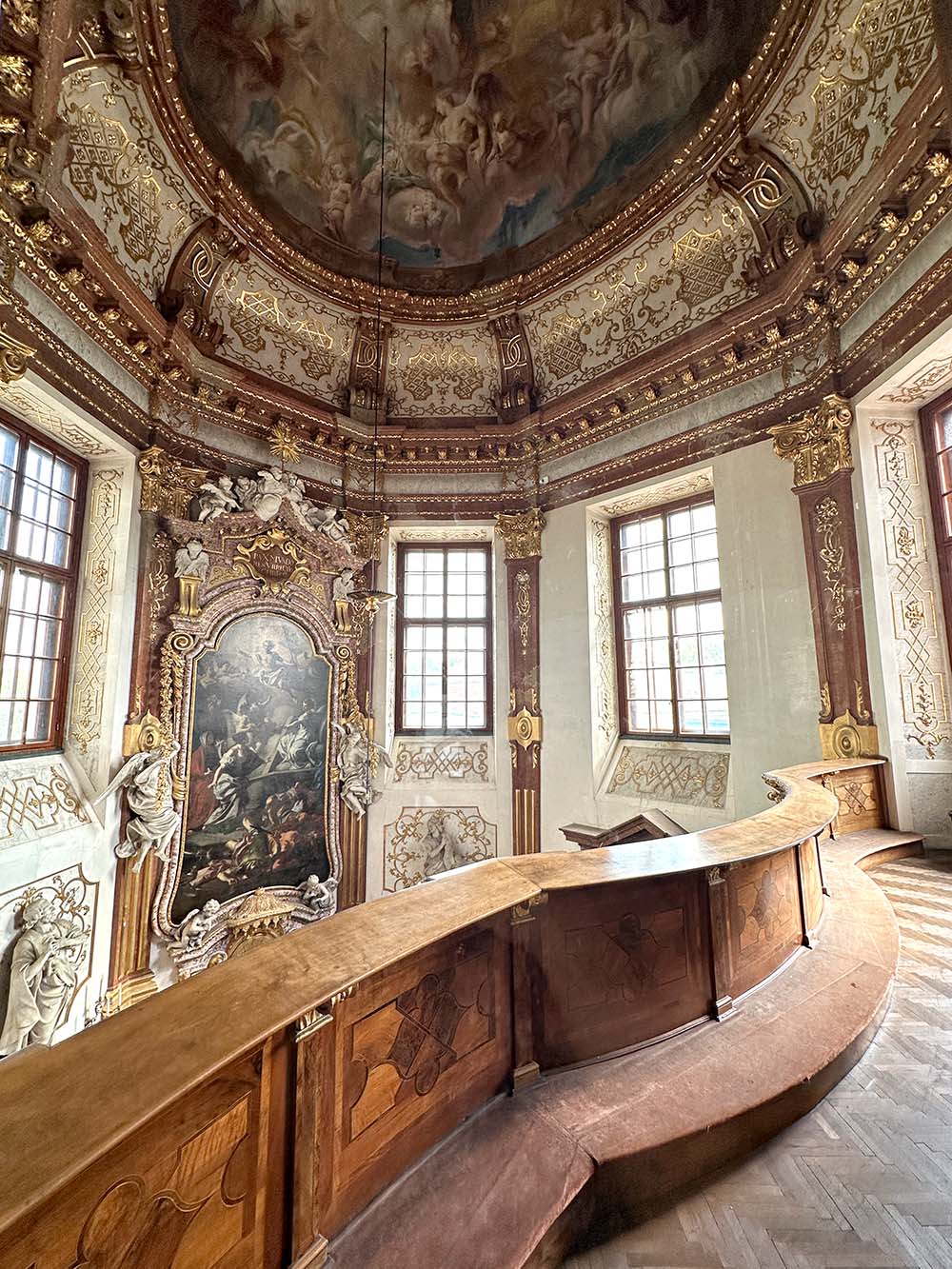
Lots of famous artists from around Europe can be found here, but of course the highlight is the Klimt collection. Klimt’s Golden Phase works where he used gold leaf liberally in his art are really distinct, though it’s interesting to see how his earlier works which are less shiny evolved into these iconic works.
The Kiss (Lovers) is on the far end of the building. It’s not that small (aka not the Mona Lisa) and I lucked out in getting my photos and seeing the work before a large tour group came in. It was also my first encounter with Judith I, another of Klimt’s golden phase highlights, as well as his non-golden phase works.
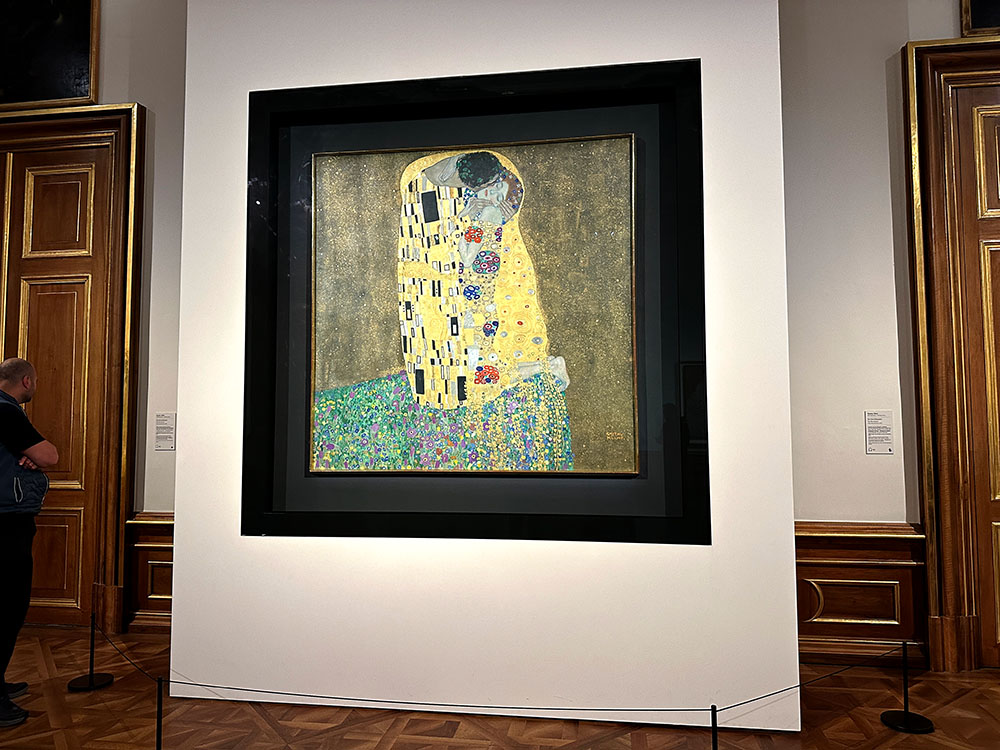
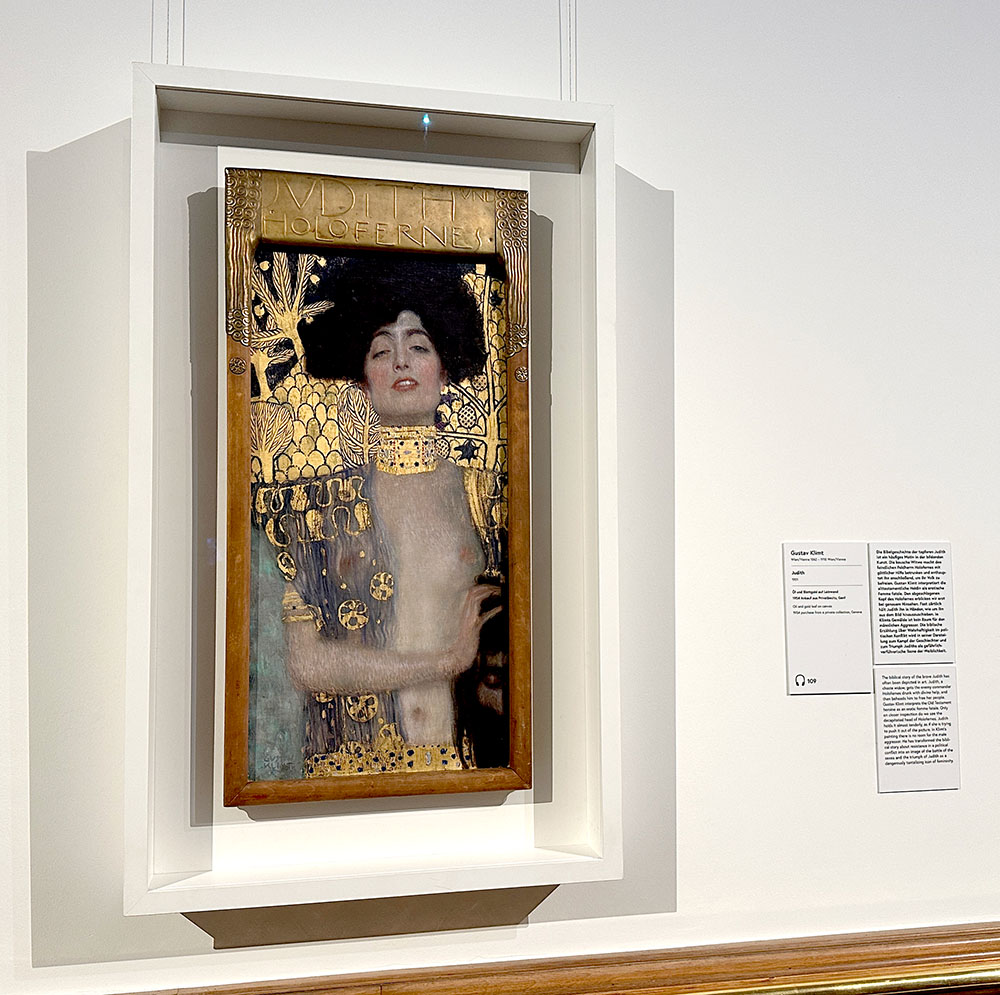
I also happened to catch a temporary exhibition where Klimt was the focus – this one was called In-Sight: Gustav Klimt and featured his sketches around an unfinished work called The Bride that Klimt was working on before his unexpected death from stroke and pneumonia at the age of 55.
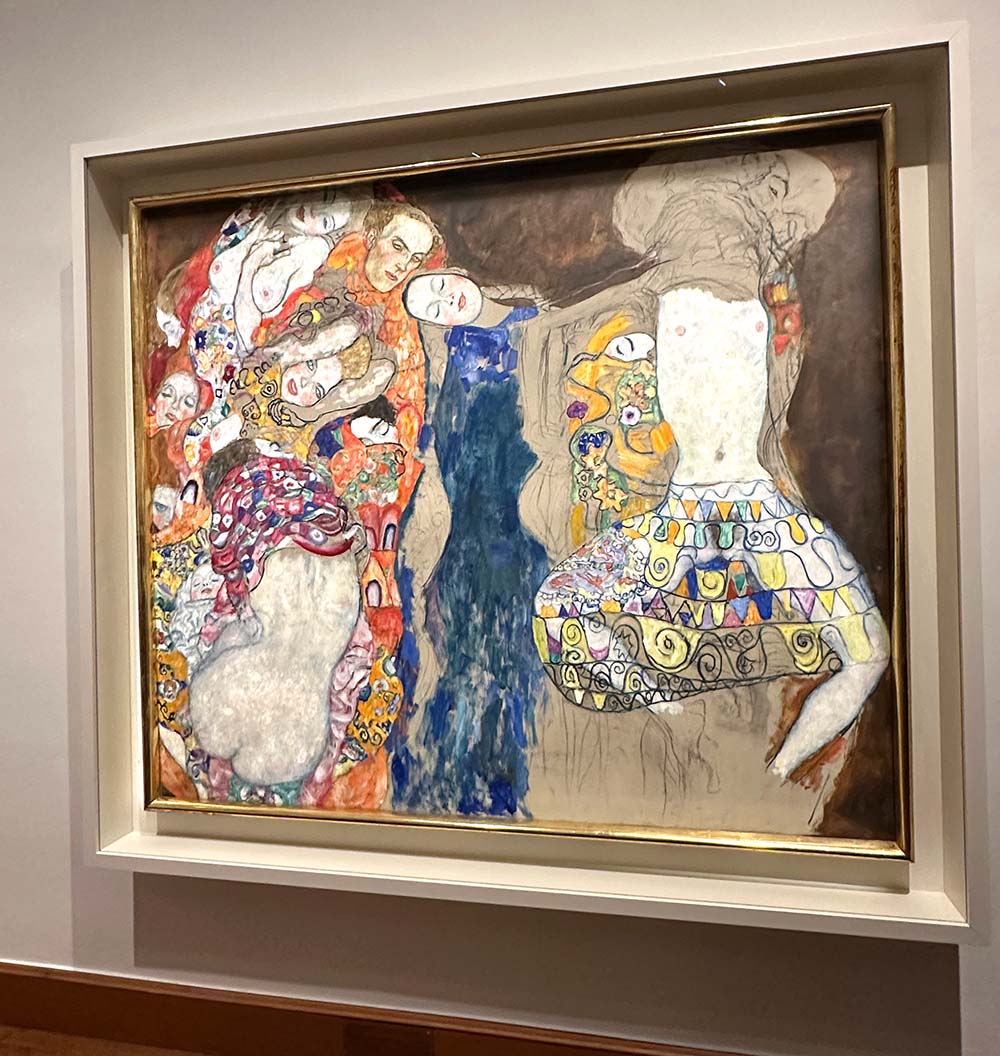
The Belvedere [Google maps] Tickets cost 19.50 Euros if you buy online (21 Euros at the door), kids under 19 go free – I used my Vienna Flexi Pass here. Open daily 9am – 6pm (till 7pm on special days). Note that tickets to the Upper Belvedere, Lower Belvedere and Belvedere 21 are charged separately – if you are using the Vienna Flexi Pass, each place counts as 1 separate entry.
Have Time for More Museums in Vienna?
I’ve listed 3 must-see museums to see in Vienna for the casual visitor who wants a bit of art and culture in their itinerary, but I definitely recommend seeing more museums and other galleries if you have the time. Here are some other Vienna museums that I managed to visit worth checking out.
Secession: See Vienna’s Landmark Art Nouveau HQ
My interest in the Vienna Secession and this new wave of young Austrian artists breaking away from the traditional artform was piqued in the Leopold Museum, so I had to go see the building that this group built which is also home to a key Klimt work called the Beethoven Frieze.
Billing itself at the world’s oldest independent artist-run venue dedicated to contemporary art, the building is an artwork in itself, a small white building with a lovely golden dome atop it. Designed by a young Viennese architect Joseph Maria Olbrich, I think it’s a pretty cool building, but back in the day when it was built it was derided as an atrocity, with people calling that golden dome a ‘golden cabbage’ among many other names.
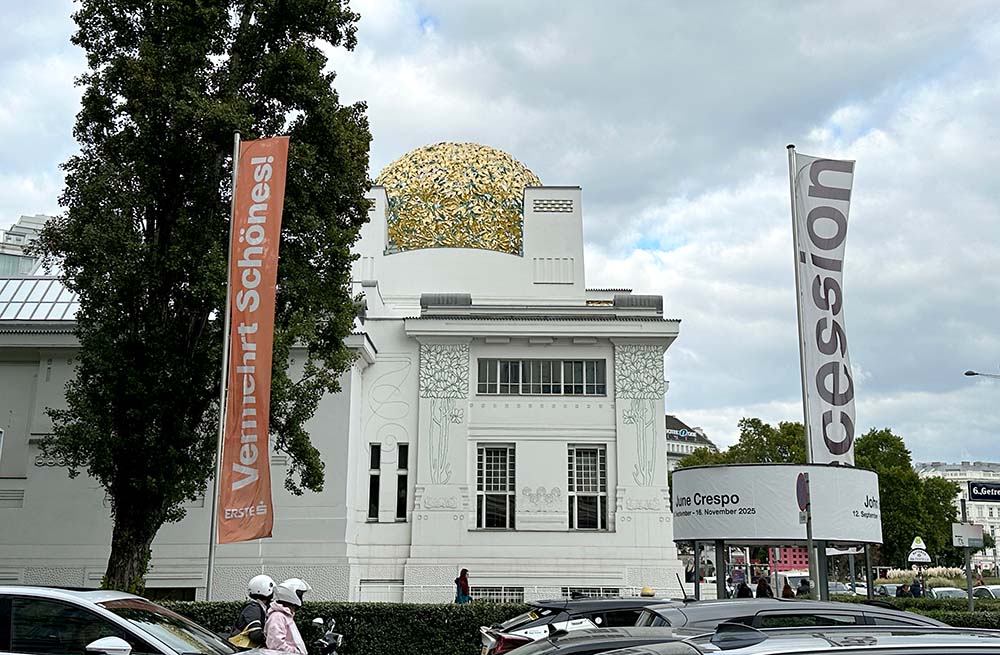
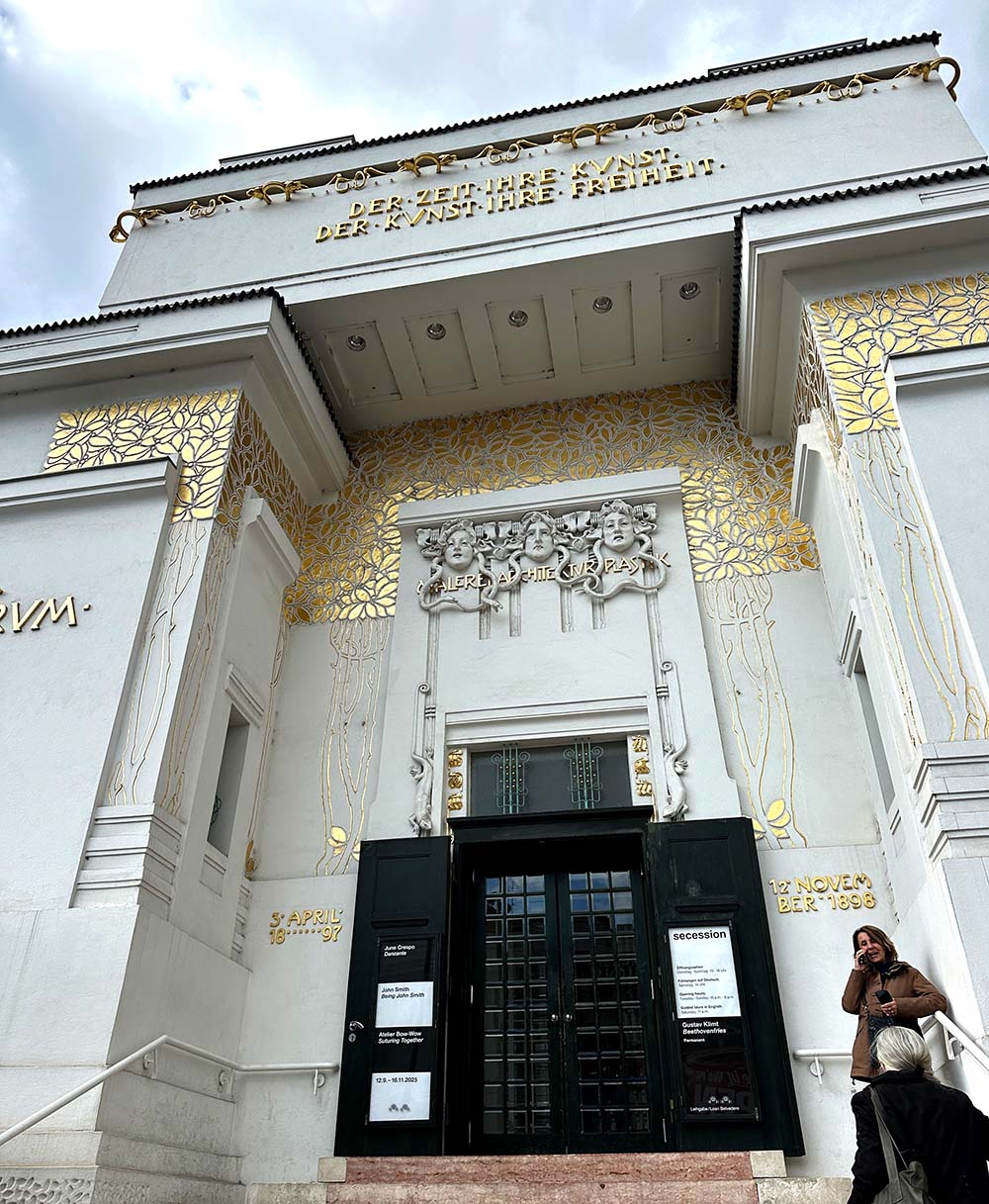
Gustav Klimt’s Beethoven Frieze Wall Cycle is the permanent work located in the basement that most people come here to see. Originally created for a 1902 Beethoven exhibition, the work was meant to be temporary and eventually cut into 8 pcs and removed by a wealthy buyer, and ended up languishing in storage for awhile and had to be restored extensively before it was returned to the Secession building in the 1908s and a special room built to house it properly.
This work is key because it marked the beginning of Klimt’s Golden Phase. It’s a visual translation of the Beethoven’s Ninth Symphony – you might not know the name of this tune, but you’ll definitely recognise this tune once you hear it (start listening to the track from about the 5:00 min mark!). There are headphones that you can borrow on site playing this tune so you can immerse as you take in the artwork from left to right.
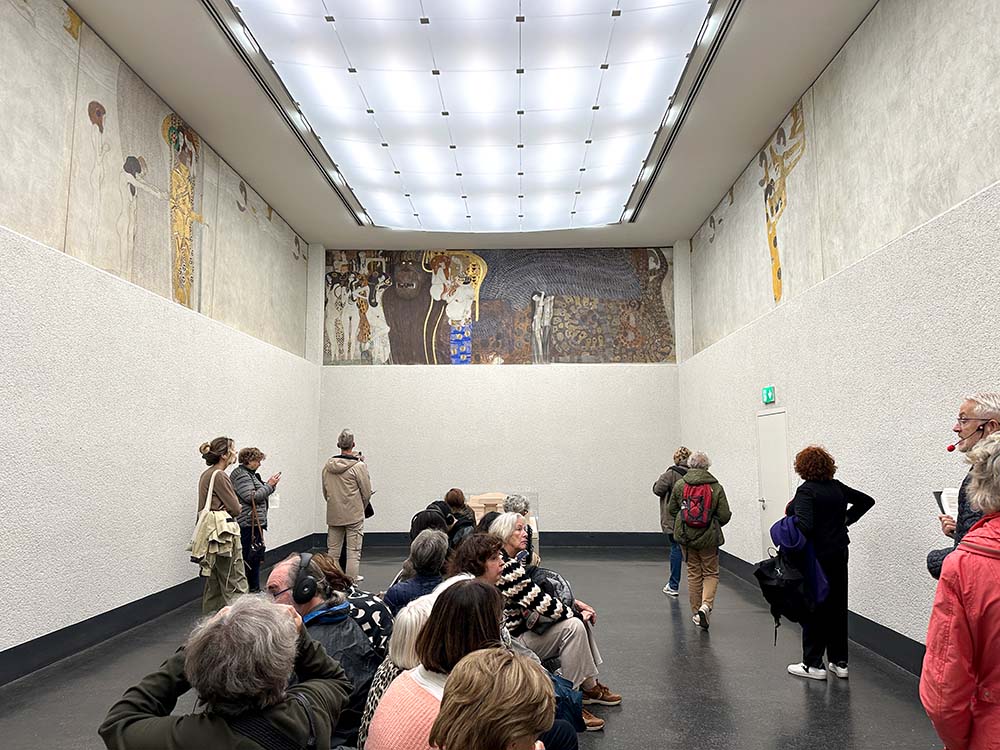
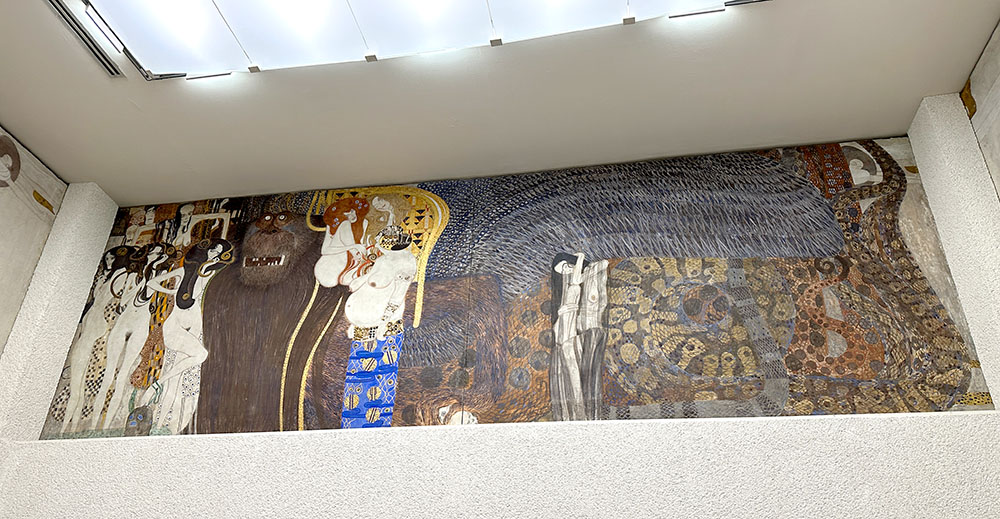
Secession also hosts other contemporary artworks in its space which makes for an interesting contrast. There was a Japanese artist by Atelier Bow-Wow called Suturing Together that featured a large thatched reed wall in the welcome hall, and another intriguing set of installations and videos by John Smith about Being John Smith.
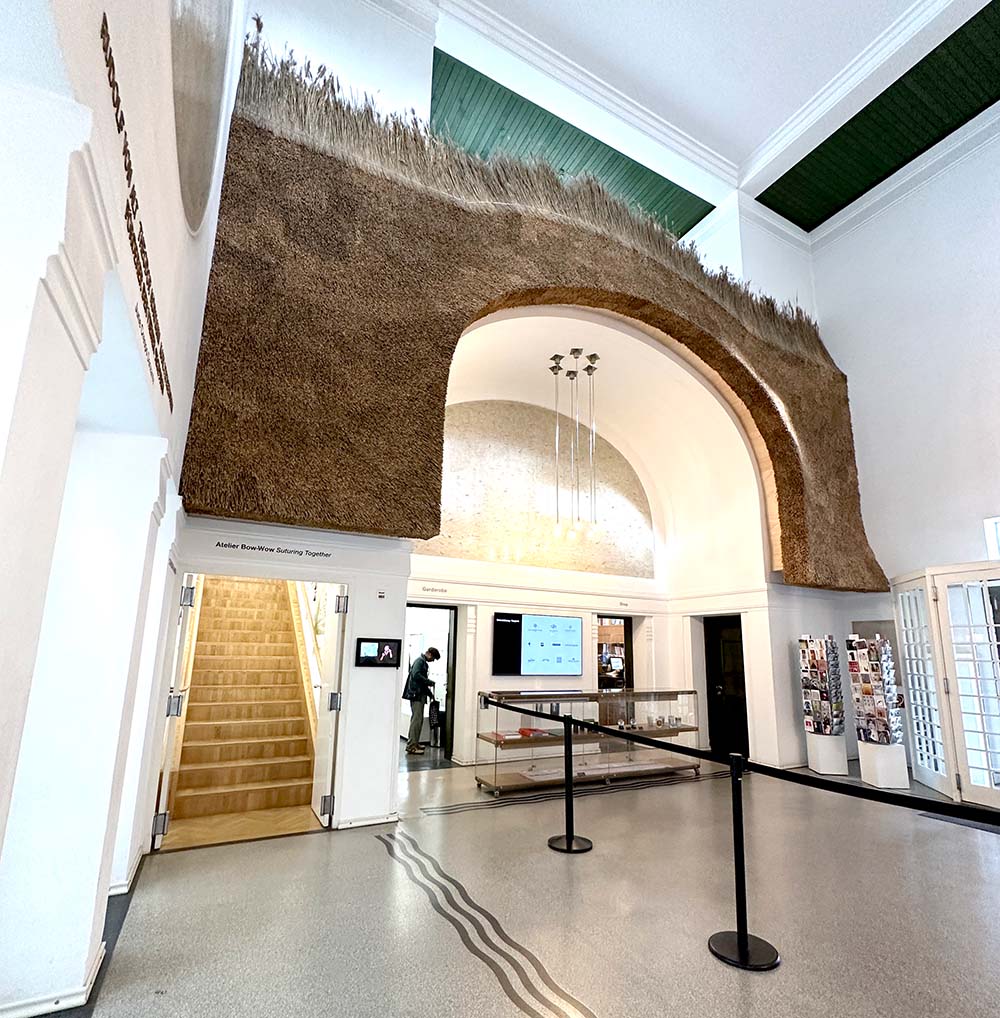
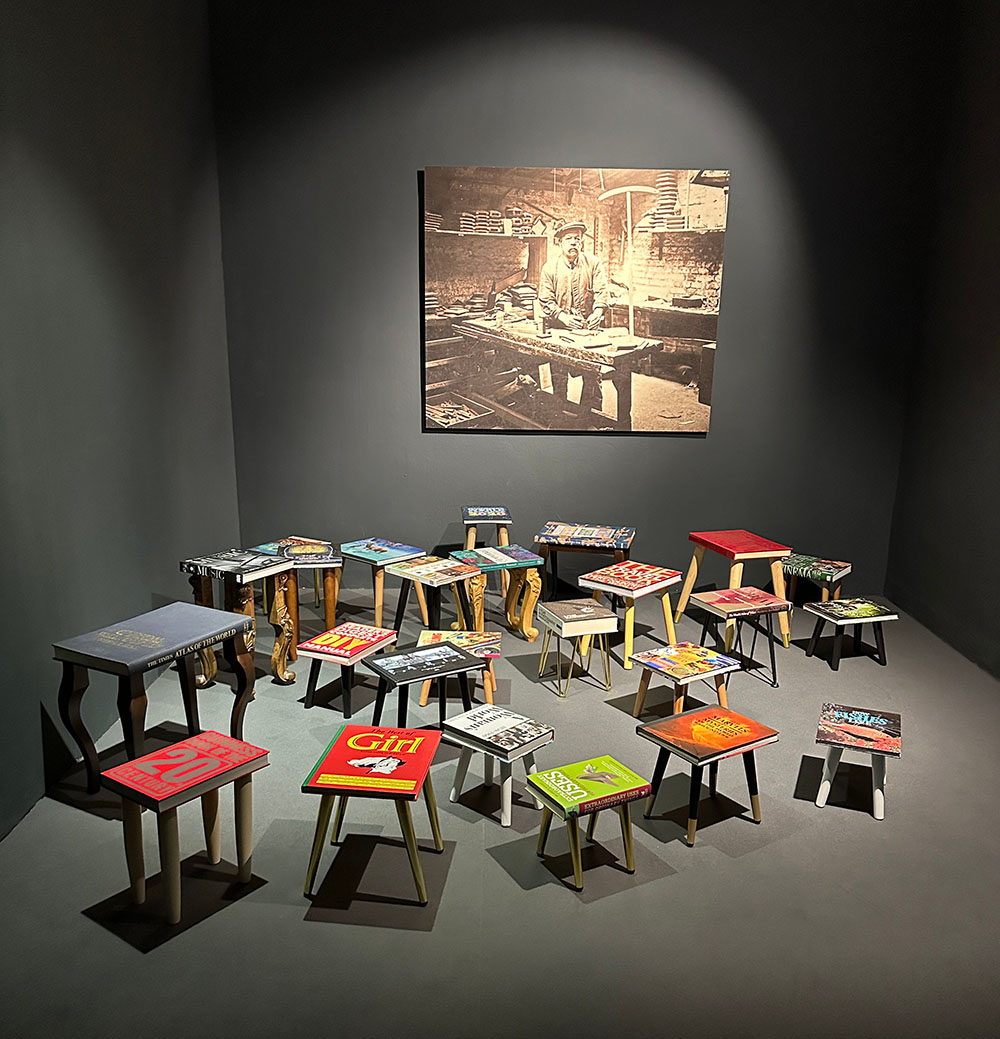
I’m glad I made the time to pop out to Secession. It’s a small gallery but full of personality and conveniently near the MuseumsQuartier and Kunsthistoriches Museum. Definitely worth a visit especially if you are a fan of Klimt.
Secession [Google maps] Tickets cost 13 Euros, kids under 26 half-price at 7.50 Euros. Open Tue-Sun 10am – 6pm (Closed on Mon).
Austrian National Library State Hall: Explore the Baroque Beauty of the Prunksaal
One of my trip mates saw a tiktok of the beautiful baroque interiors of the Austrian National Library online and decided we needed to go check it out. This library is also known as the Prunksaal or State Hall is located on Josefsplatz next to the Augustine Church (where several Hapsburgs had weddings at), and it turned out to be one of the most beautiful buildings we saw on this trip – which is saying something given how many Baroque buildings we saw!
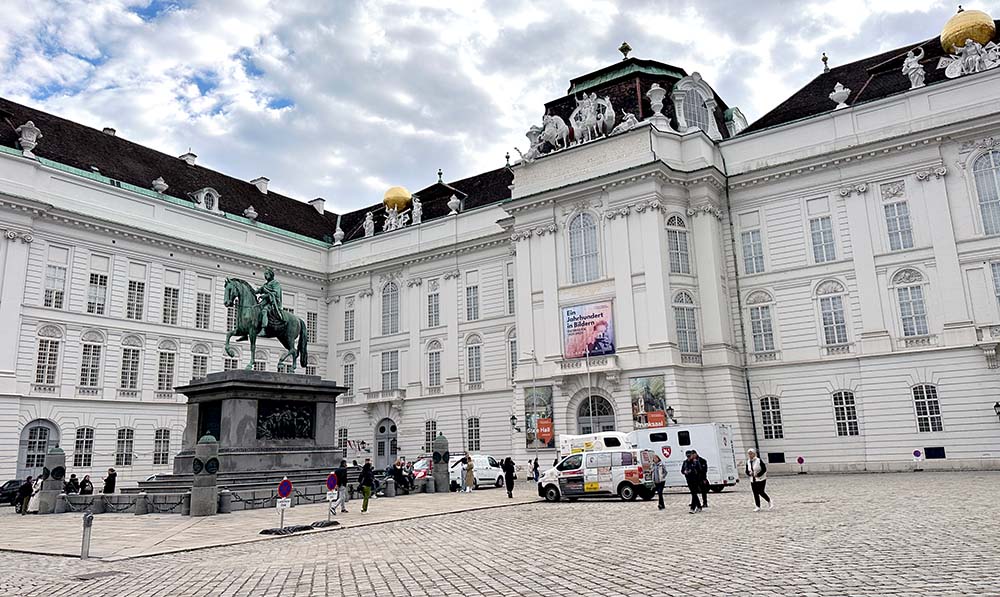
The name ‘State Hall’ doesn’t sound like much, but as you walk through the doors of this library you will be stunned by the interior. Built by Emperor Charles VI in the 1800s as a Court Library, this is a surprisingly long library at 80m with soaring 20m ceilings, with beautiful brown wooden shelves with over 200,000 hard covered tomes are topped by a pretty impressive painted domed ceiling and frescoes. It’s like stepping into a real-life story book.
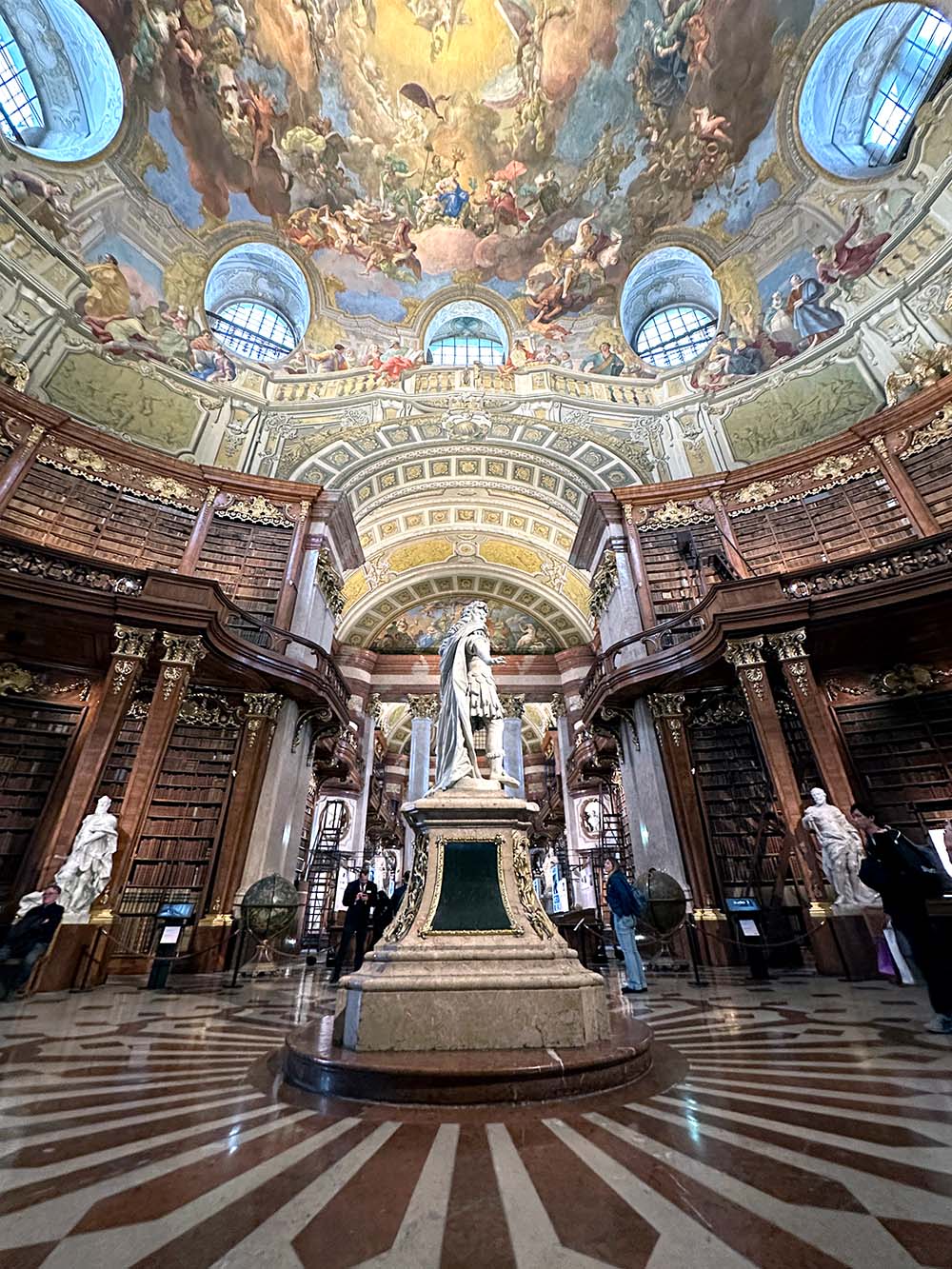
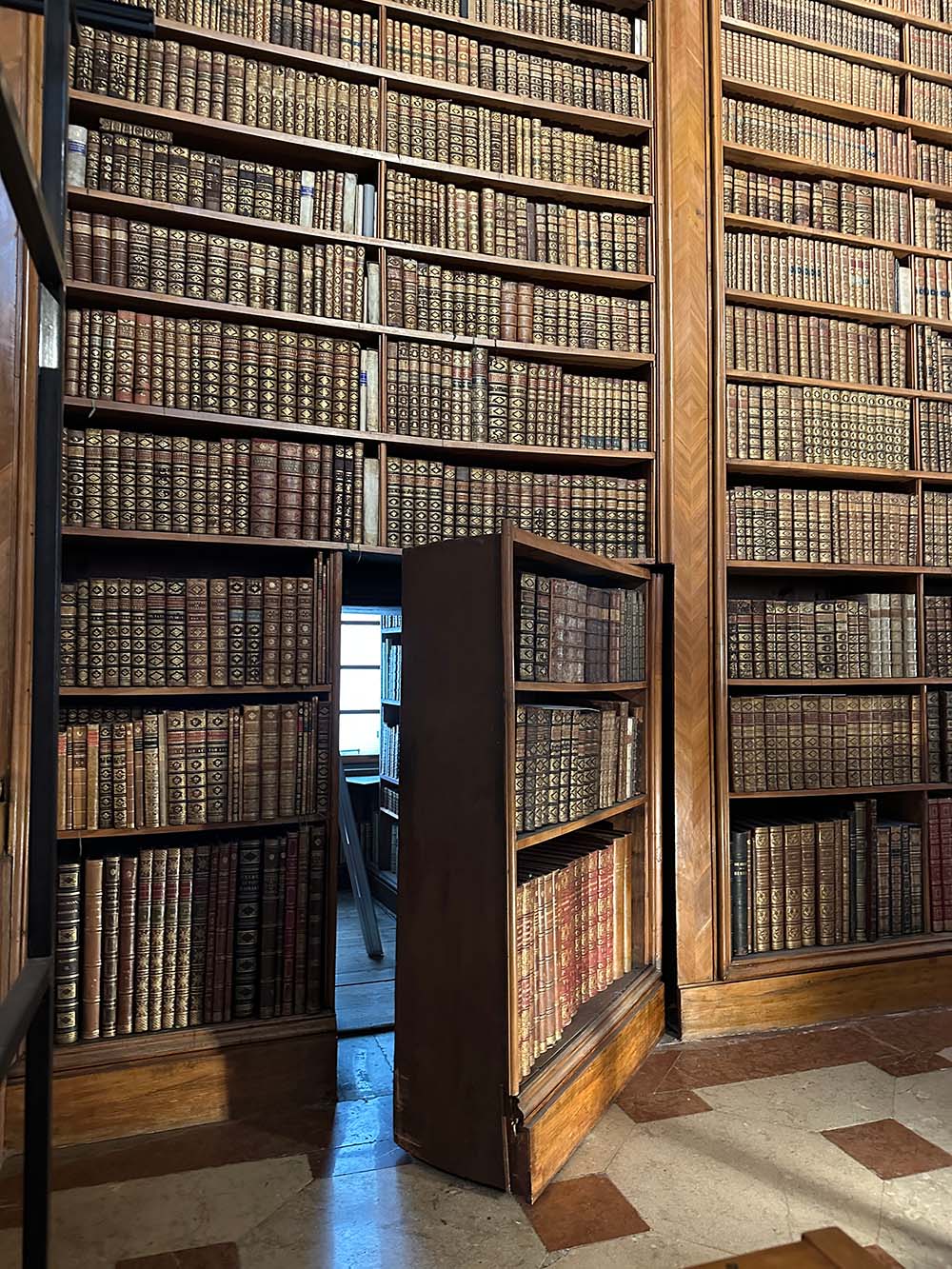
There are plenty of statues around the library representing various Austrian and Spanish Hapsburgs. On display are some of the books here – many of these were replicas because the original books are too fragile to be put on display or handled!
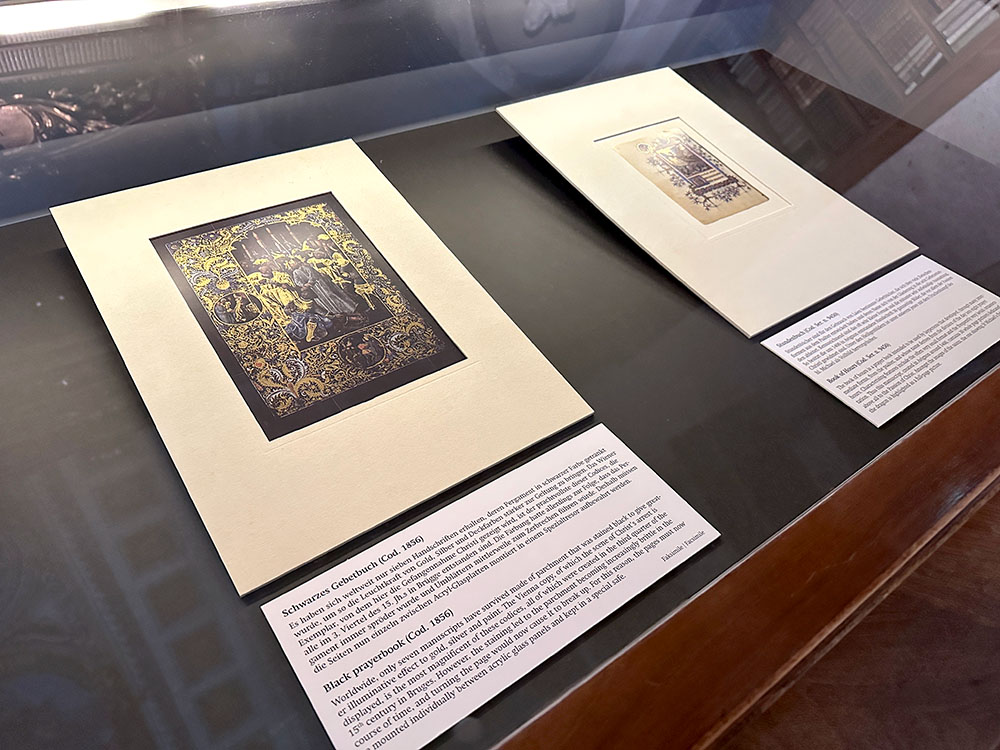
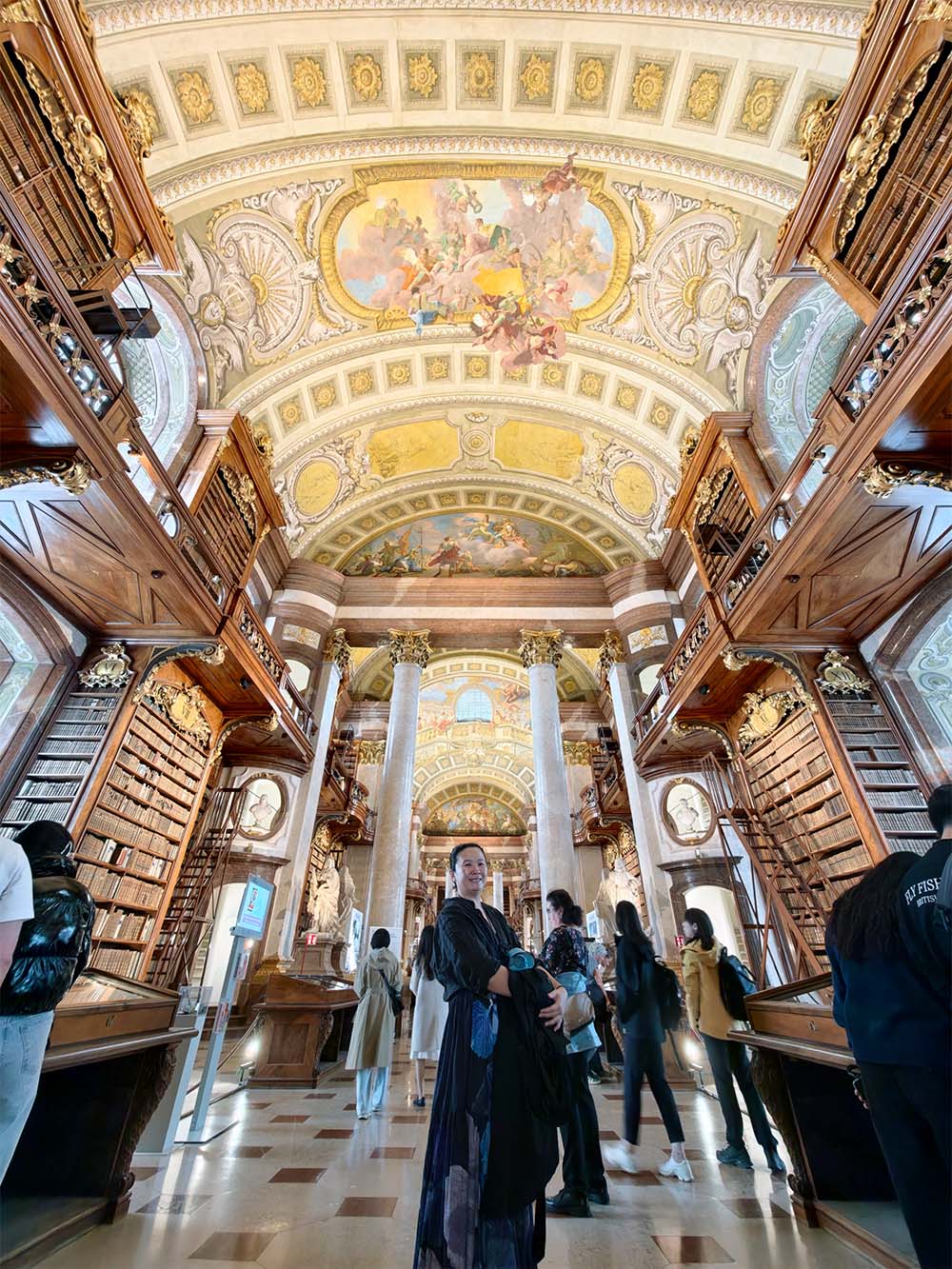
Very centrally located near the Hofsburg and a short walk from the MuseumsQuartier, the Austrian National Library State Hall is worth stopping by for a look for book lovers to take in its shelves and the beautiful architecture.
Austrian National Library State Hall (Prunksaal) [Google maps] Tickets cost 11 Euros – I used the Vienna Flexi Pass here. Open Tue-Sun 9am – 6pm, till 9pm on Thurs (Closed on Mon).
You don’t have to be an art expert to appreciate Vienna! With so many different types of museums for all sorts of tastes, it’s quite easy to fit in a little bit of cultural appreciation into your itinerary. Hopefully this guide gave you an idea of where to begin when you plan for your next trip to Vienna.
Tips to Get the Most Out of Vienna’s Museums
Vienna is not the cheapest place to visit – the cost of visiting many different museums can add up quickly, especially because some places like the Belvedere and Schonbrunn for example have multiple attractions with their own entry costs.
Though European museums are great if you are younger as there are lots of discounts particularly if you are a student under 19 or 26 depending on where you go.
Save on museum entrance fees: Vienna Pass
If you’re planning to visit a number of museums, it might make sense to buy a pass like the Vienna Pass that covers many museums rather than buy individual tickets. Based on what I covered in this article:
- Kunsthistoriches Museum – 24 euros
- Upper Belvedere – 21 euros
- Prunksaal State Hall Austrian National Library – 11 euros
- Leopold Museum – 19 euros
- Secession – 13 euros (not on Vienna Pass)
That would have cost a total of 88 euros over 2 afternoons. I used the Flexi Pass (3 visits) for Prunksaal, Kunsthistoriches and Upper Belvedere – that would have cost 56 Euros when the pass costs 65 Euros (10% off the u.p 73 Euros).
It’s not so worthwhile in this case because the Prunksaal entrance was cheaper – you’ll get your money’s worth for the Flexi Pass only if you pick the more expensive experiences (>23 Euros) and include either the hop-on/hop-off bus tour (53 Euros) or Danube boat tour (32 Euros).
But one important thing is that you save a lot of time on not having to queue for tickets as you just need to scan the QR code that is sent to you at the entrance.
For visiting 2-5 attractions over a period of 60 days, check out The Vienna Flexi Pass for more information or purchase the Vienna Flexi Pass on Klook [affiliate link]
I had the benefit of all this being comped for me since it was a media trip, but on my own and if I had full days to dedicate to museum-seeing and I really wanted to see as much as possible, I would have considered getting the Vienna Pass with unlimited visits for 2 or 3 consecutive days, and pack in a lot more sights like the Albertina, mumok, Kunsthalle Wien and Schonbrunn Palace amongst other things to really try and maximise the value of the pass.
For unlimited attractions by the day, check out the The Vienna Pass website for more information or purchase the Vienna Pass on Klook [affiliate link].
Save on public transport fees – Vienna Transport Pass
Vienna is very easy to get around as it is quite well connected by trams, buses and the subway system. On this trip I mostly took a metro and walked a lot because we stayed quite close to the museums area, but definitely consider getting a transport card so you don’t have to even think about buying single passes.
We were given a 48 hour paper pass to get around Vienna that starts the moment you first validate it – there are machines to do this in the buses, trams or the train stations. It makes sense to get a day pass if you plan to take more than 4 rides a day (each ride is 2.40 euro). If you plan to stay more than 3 days, then the 7-day flexi pass is your best option.
I mostly used Google maps to navigate the public transport system and it was generally quite accurate. The bus/tram stops would also display wait time for the next ride. I didn’t use the subway on this trip but I like that there were usually several options of transport to get between places.
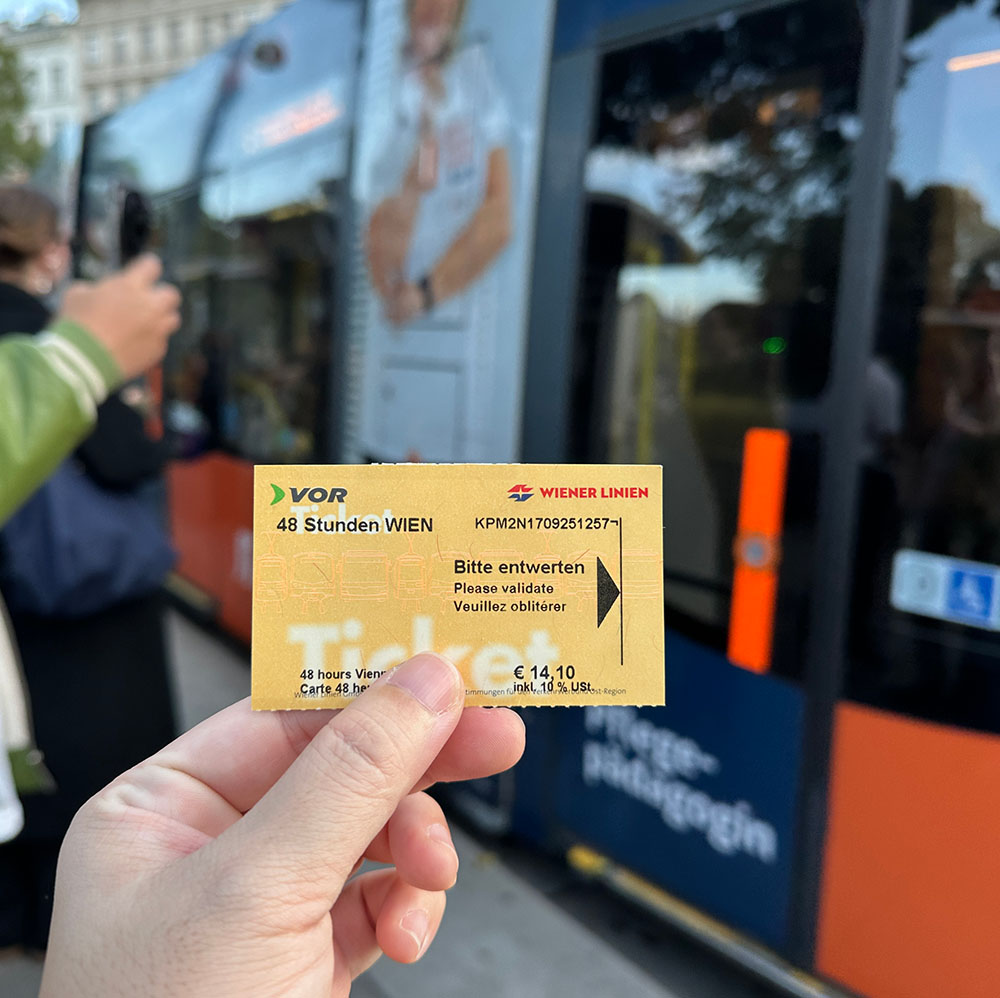
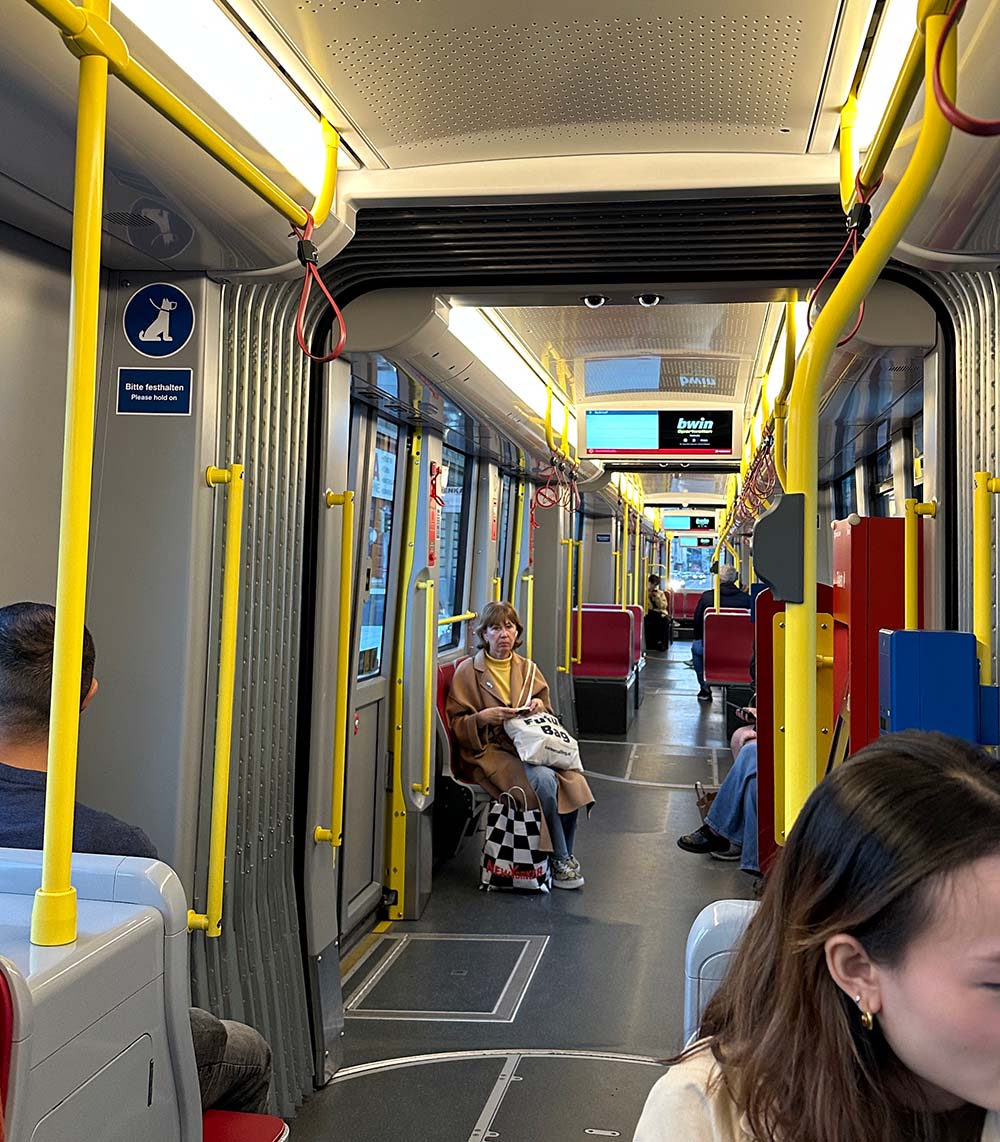
Learn more about how to take public transport and tickets in Vienna
Museum Closures – Avoid Mondays
Avoid Mondays for museum visits as many of Vienna’s museums are closed on Mondays. That said, there are exceptions that open daily, or a handful like the Leopold Museum that have closures on other days, but by and large most museums tend to use Monday as a closing day.
In contrast, Thursdays seem to be a day where many museums offer extended opening hours, so make sure to do some planning if you want to maximise your time in Vienna.
Carry coins for lockers
Some museums don’t let you carry your bags around to avoid any artwork damage and crowd management. It’s helpful to always have both a 1 Euro and 2 Euro coin with you because these are typically used for the refundable lockers.
Where to Stay in Vienna: Boutique Hotels with Artistic Flair
On this trip to Vienna we were put up in two beautiful hotels belonging to the Small Luxury Hotels group. I’ll admit that I prefer a hotel with character and quirks over a more run-of-the-mill chain luxury name, so this was very up my alley. Both hotels also had a pretty artsy theme so that matched the whole museum-going energy, along with both being very close to the MuseumsQuartier area.
Hotel Das Tyrol
Hotel Das Tyrol is a tiny boutique hotel with just 30 rooms located right off the famous Mariahilfer-strasse high-end shopping street – there is an entrance to the MuseumsQuartier right across the street from the hotel entrance, and the MuseumsQuartier Ubanh train station was a short 5 minute walk away. The location alone makes it a very desirable option as it is very convenient.
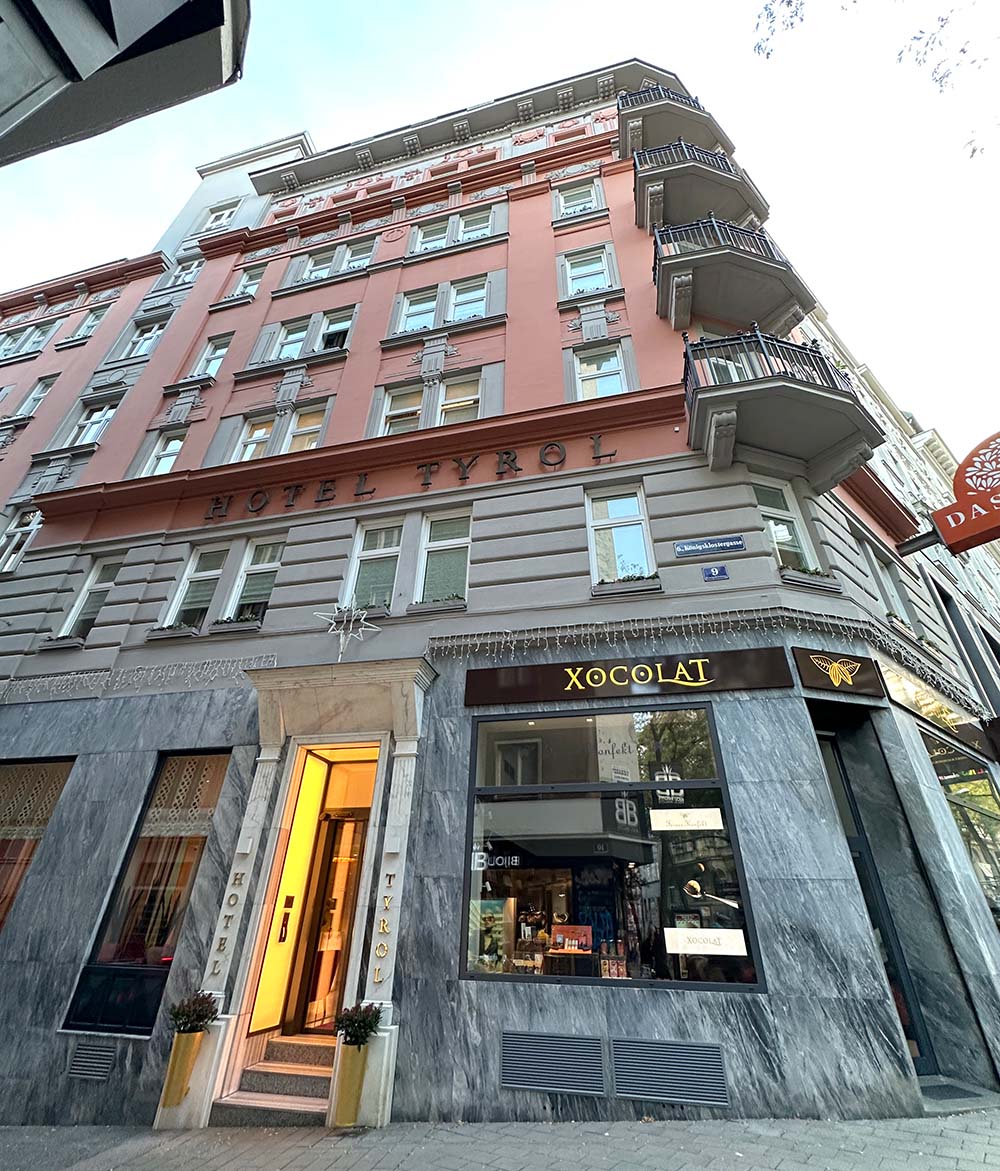
The hotel itself is quite small and narrow and had a very small lift that could only hold 2-3 pax at a time. My room was up on the 5th floor and in the middle of two other rooms – the corner rooms are slightly more spacious but my room was comfortable enough though it was a bit tight figuring out where to put my suitcase.
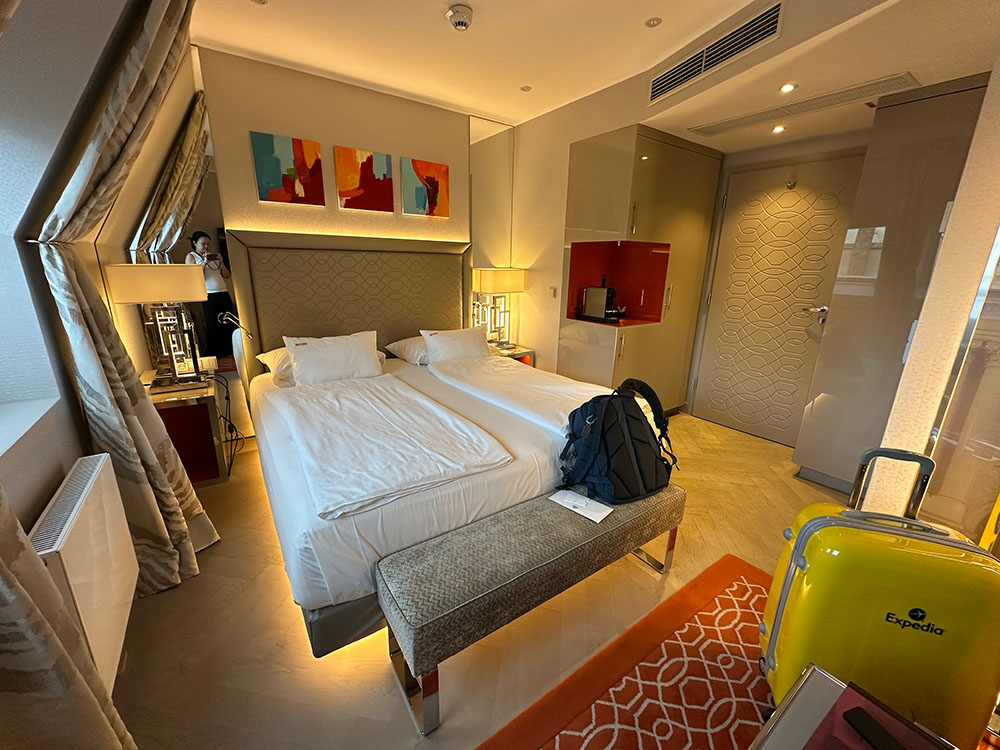
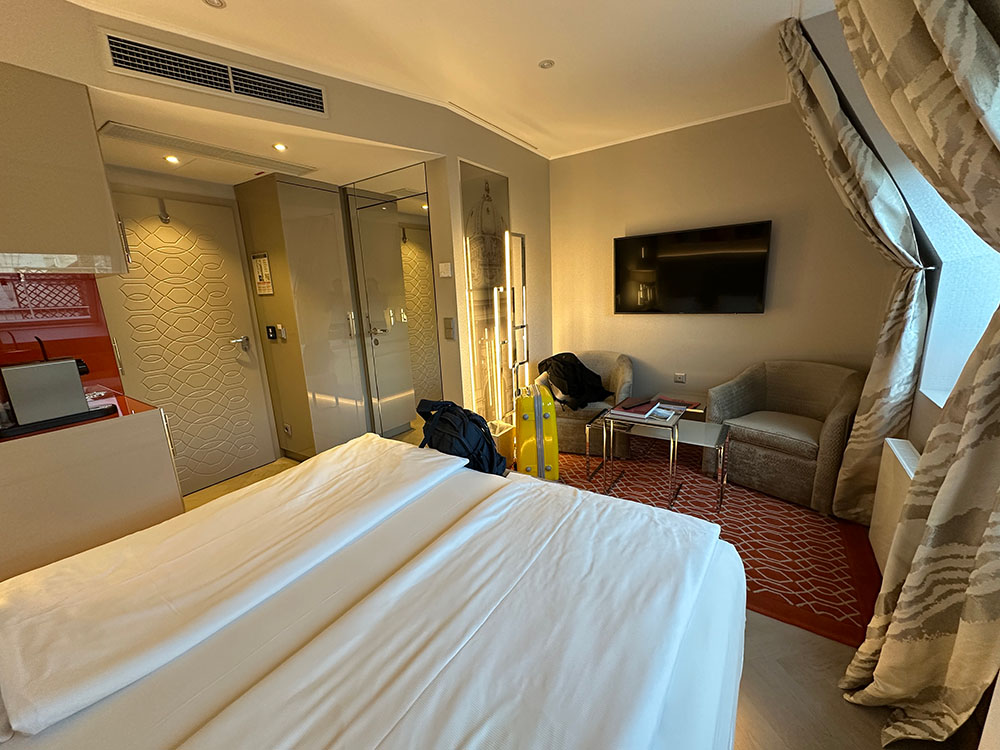
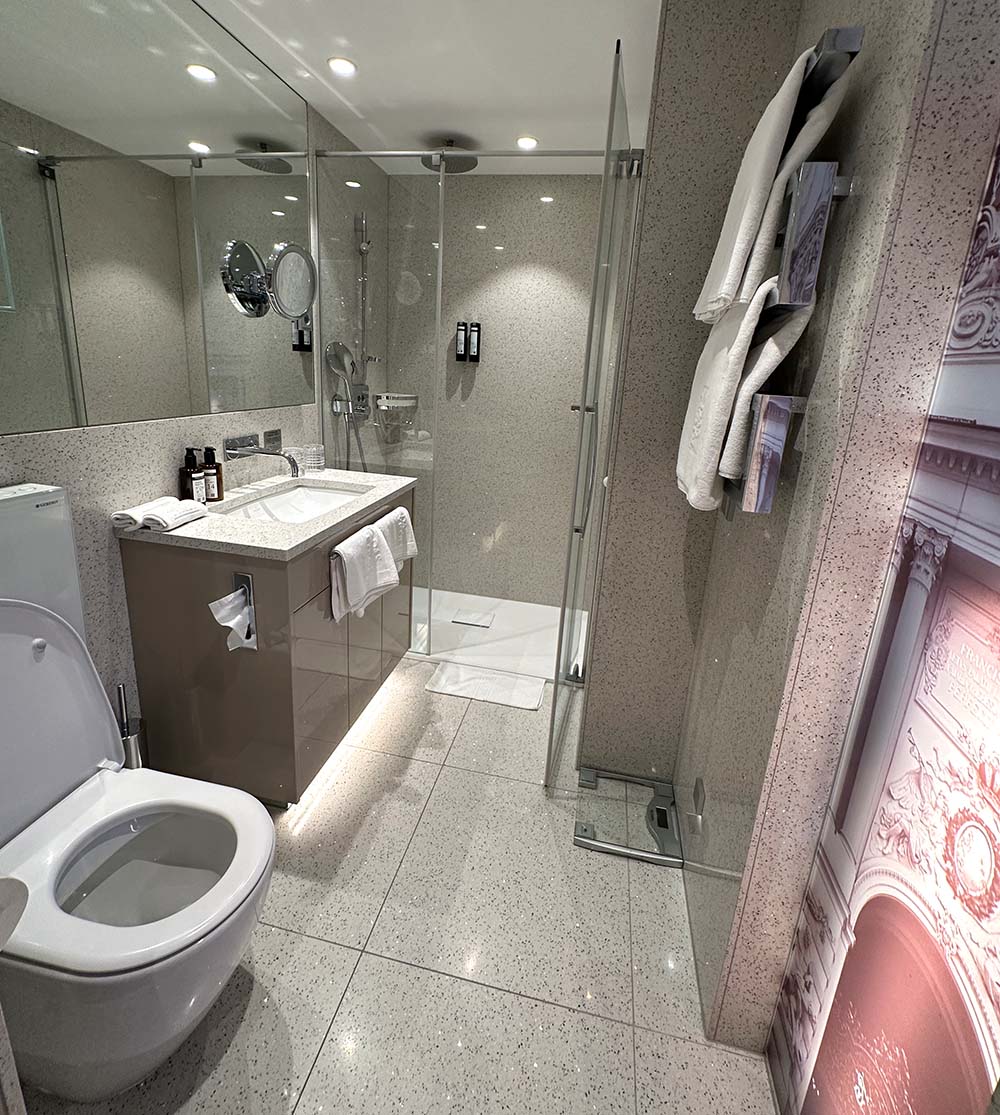
There is art to be found throughout the hotel, from the lobby area to the different artworks that decorate each main hallway. The hotel also has a spa in the basement though we didn’t have time for that. I enjoyed their breakfast which was served in the restaurant – there is a menu to order off and everything was so good, particularly their almost glass-like super flat bacon.
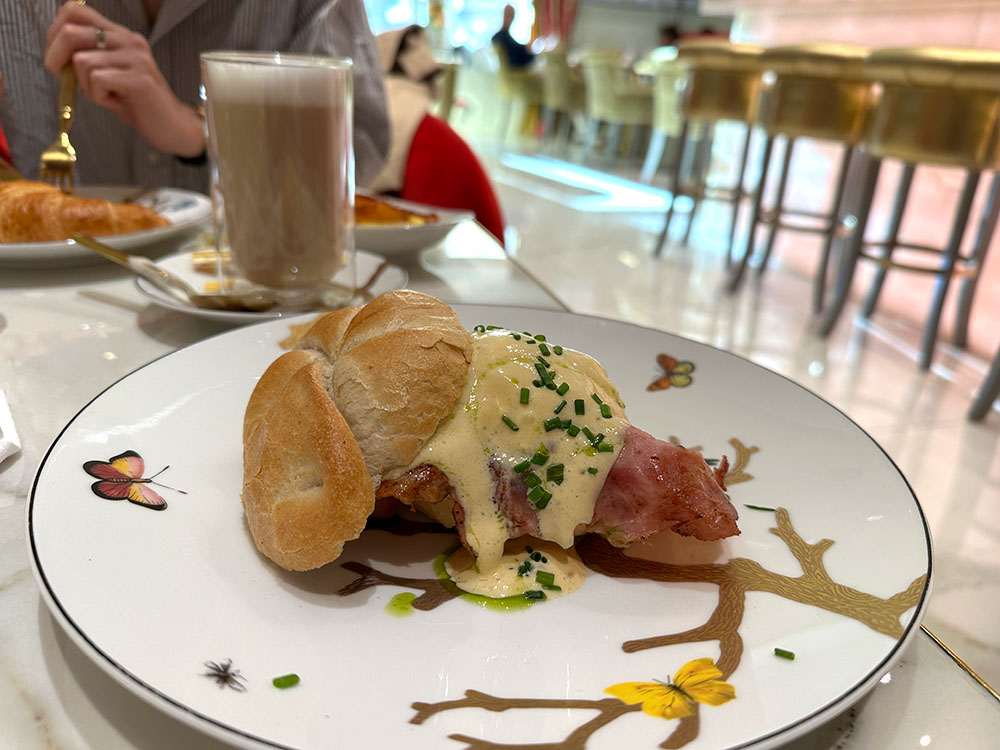
Check out the Hotel Das Tyrol website or on the Small Luxury Hotels website.
Hotel Alstadt
In the second half of our Vienna trip, we moved to Hotel Alstadt, another boutique hotel on the other side of the MuseumsQuartier. This neighbourhood had different vibes away from the shopping street and was overall more quiet and chill, though it required perhaps an additional 10mins walking to the main areas. This boutique hotel also shares a large apartment building with non-hotel guests – they had brown doors instead of grey.
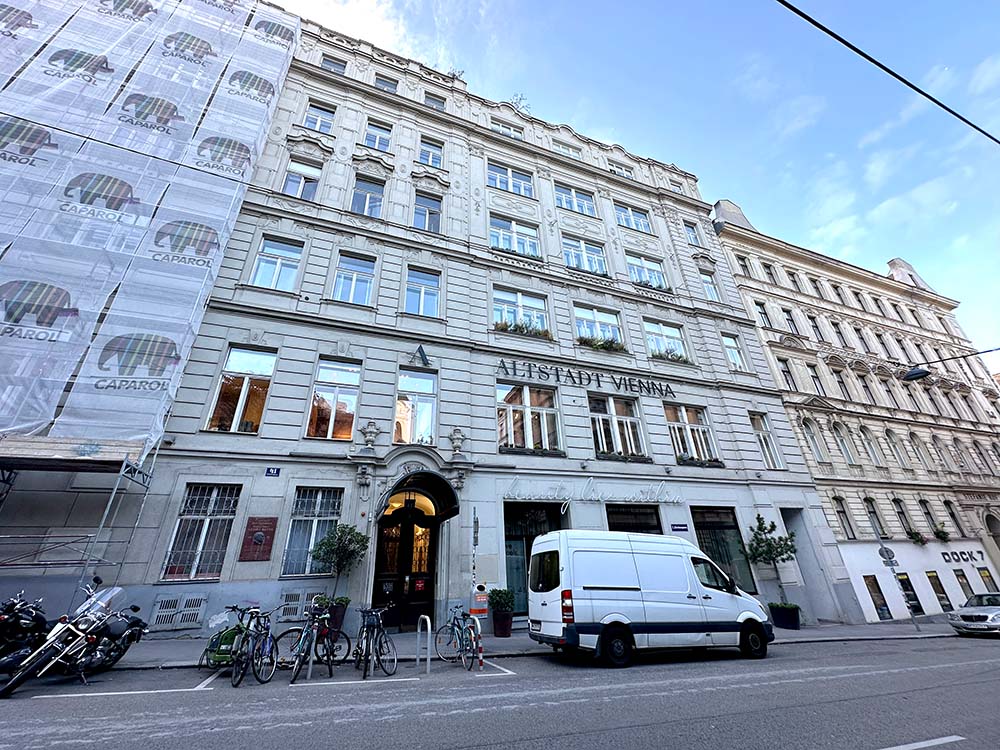
Similar to Hotel Das Tyrol, art is a big part of Hotel Alstadt’s identity, but here they’ve baked it into all the rooms as every single room has a unique design and theme! The staff took us on a little tour to show us some of the available rooms that weren’t currently occupied, which included one for music lovers with a giant collection of LPs, another had room for small meetings and a baby grand piano.
When you book the room, you book according to the size you want, and if you don’t have a specific request, staff will actually do a little research on your name to see if they can match you up to a suitable themed room. My assigned room was the United Nations Suite – there is actually an interconnecting room that shares the same corridor but no one was staying there when I was there.
My room was an XXL Suite and there was so much space with a separate bedroom and lounge area! Unfortunately we were out a lot so I didn’t manage to enjoy it as thoroughly as I would have liked. But overall it was a very comfortable stay, and staff really do try to give it a personal touch and you get little gifts of food for turndown.
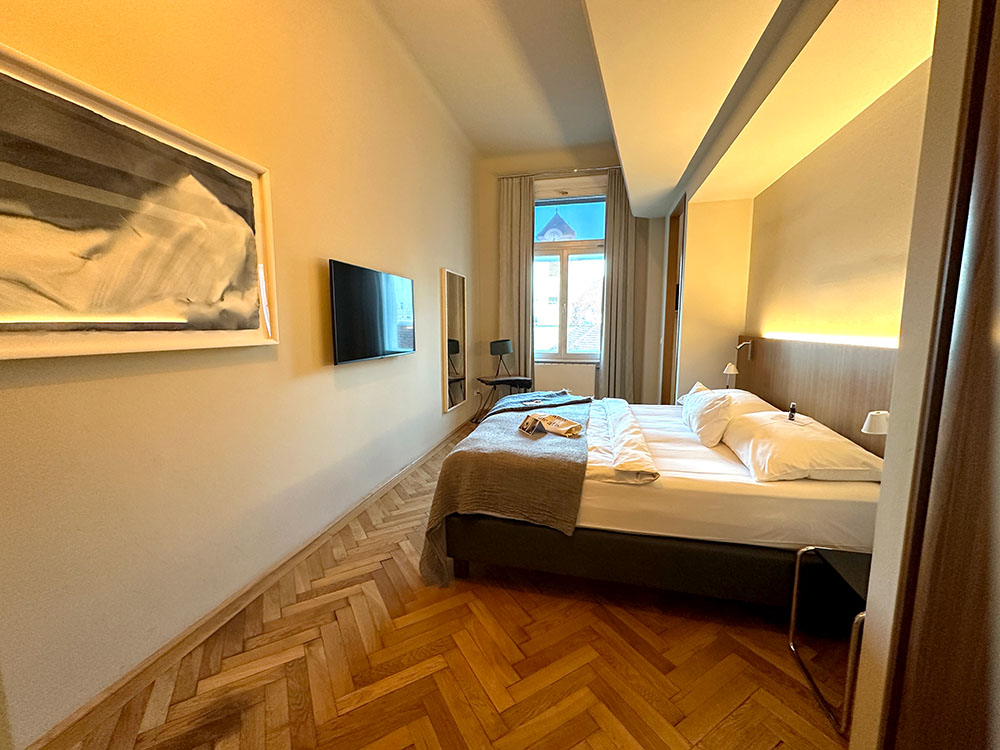
Exploring this hotel is a real treat, especially if you are someone who loves a good Insta-friendly backdrop. Not just every room is different, but every corridor and space has its own vibe and is so picturesque.
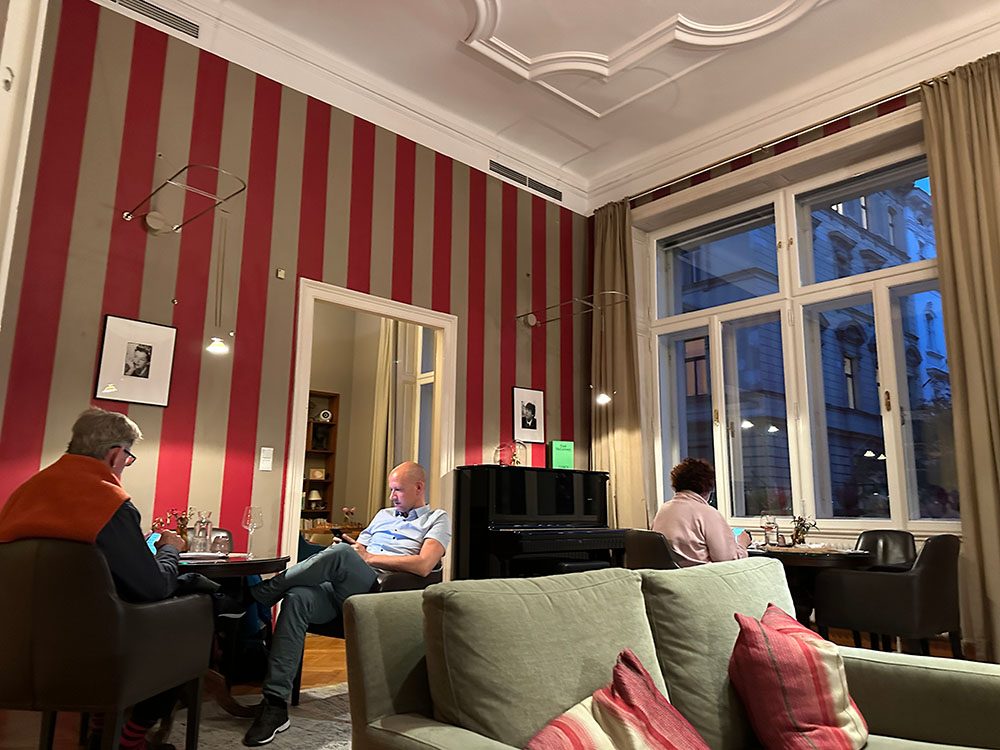
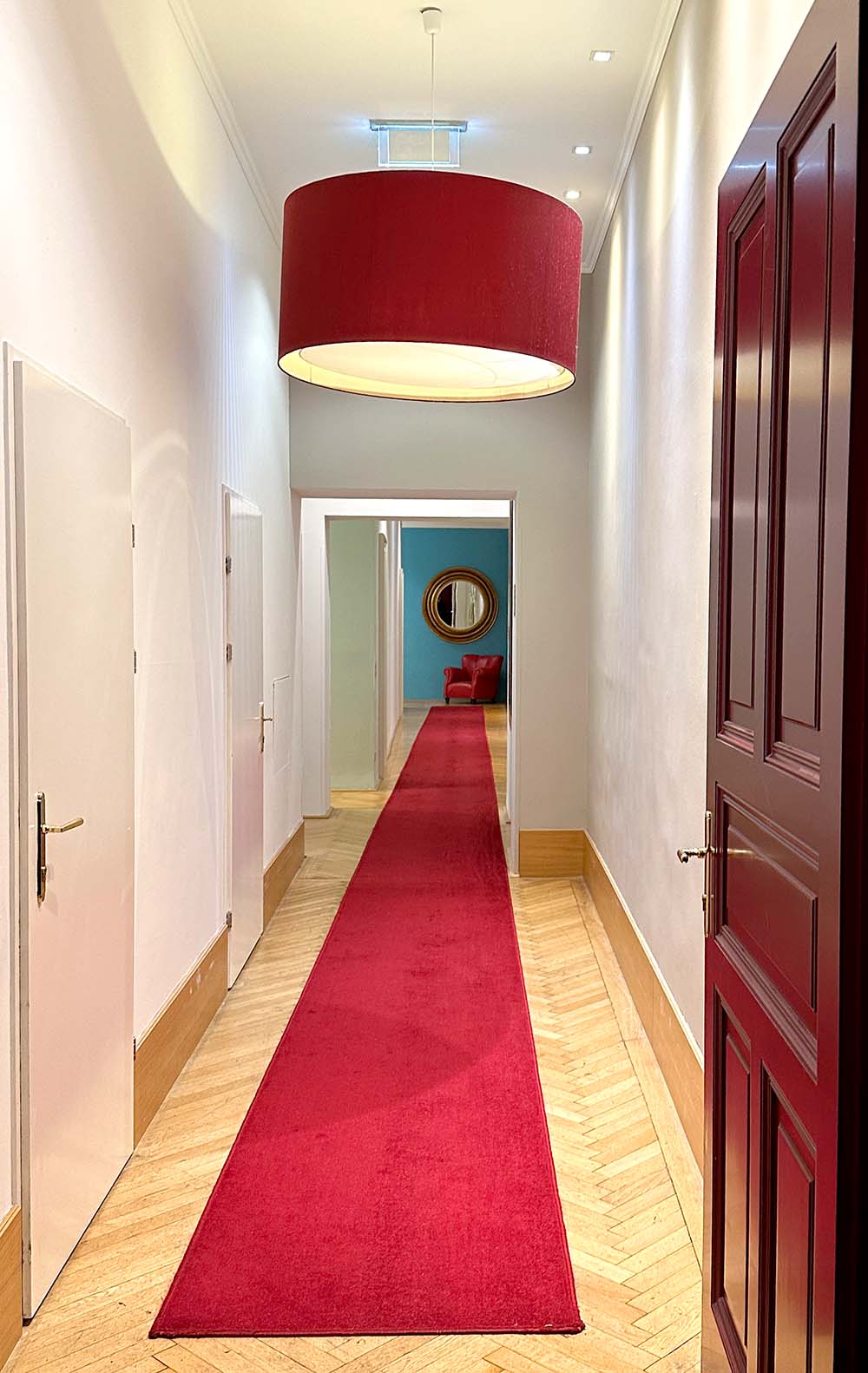
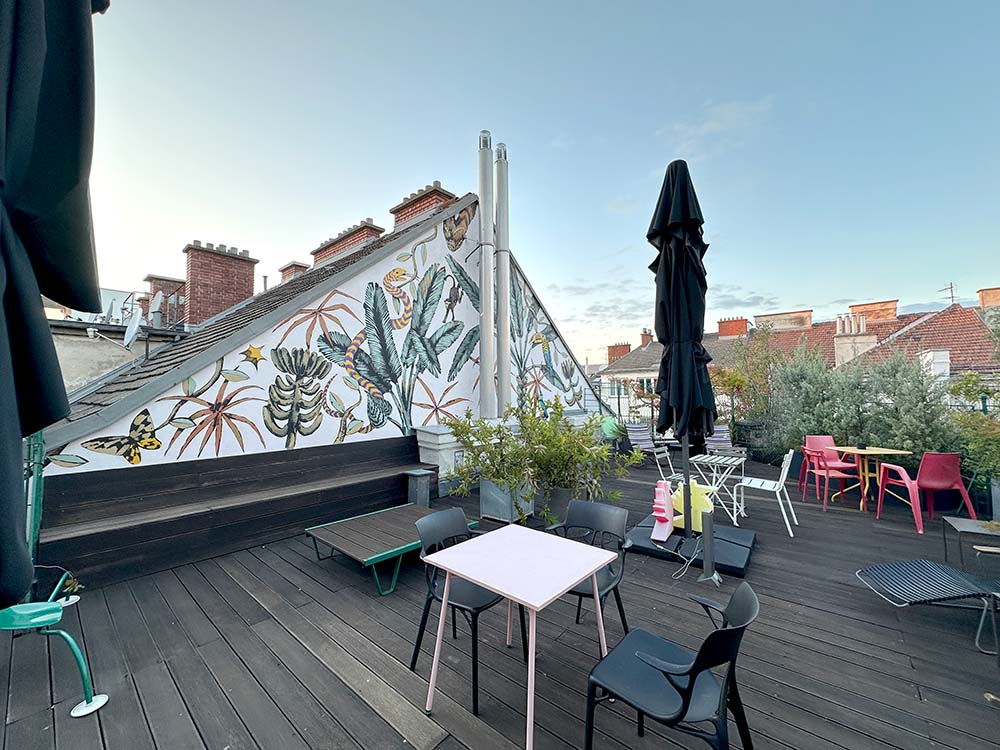
Check out the Hotel Alstadt website or on the Small Luxury Hotels website.
How to Get to from Singapore to Vienna
Scoot direct flight SIN-VIE
The last time I visited Vienna was via overland buses and trains in my trip around Europe, but the good news is now you can fly direct from Singapore to Vienna via Scoot! They are currently the only airline with this direct SIN-VIE route, a 12+hour direct non-stop flight 3x a week on Tuesdays, Thursdays and Saturdays that goes from Singapore’s Changi Airport to Vienna International Airport.
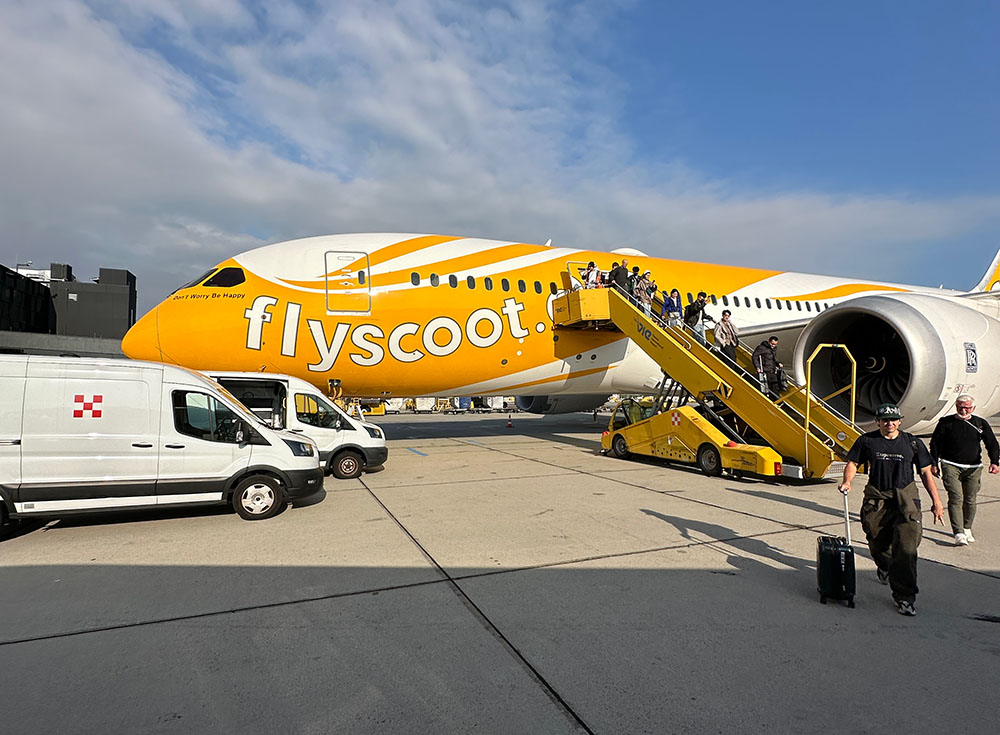
The flights both ways were pretty full as I think it’s a pretty good connection for Europeans looking to get to South East Asia easily and more affordably via a low cost carrier. Be prepared for some red-eye flights though, as you depart Singapore at 3am and arrive back in Singapore close to 5am, but you do arrive in Vienna in the late morning so you can transit easily or grab lunch, and you can also head straight to the airport after breakfast on your way home.
- SIN to VIE: 0300 – 1010
- VIE to SIN: 1125 – 0450 (+1)
Vienna is a great base for seeing Central Europe – Austria borders Germany, Switzerland and Italy towards the west or if you want to see more of Eastern Europe, you’re connected by land to Czechia, Slovakia, Hungary and Slovenia. Back on my Career Break, I took a train from Bratislava to Vienna, and left 2 nights later for Brno in Czechia by bus.
If you’re a bit concerned about taking a low cost carrier for a long flight, let me show you a little of what to expect. This was my first LCC long-haul flight and I think it’s not really that different from what other airlines economy classes offer, and you get a bit more option to pick and choose your amenities accordingly.
If you can afford it, definitely go for Scoot Plus seats. With a 2-3-2 layout and wider + more sturdy seats that can recline further and have a leg rest, it was definitely a more comfortable ride all around. Also you’re right up front and get priority boarding/deplaning (though at Vienna airport you need to take a bus on the tarmac so perhaps not as useful).
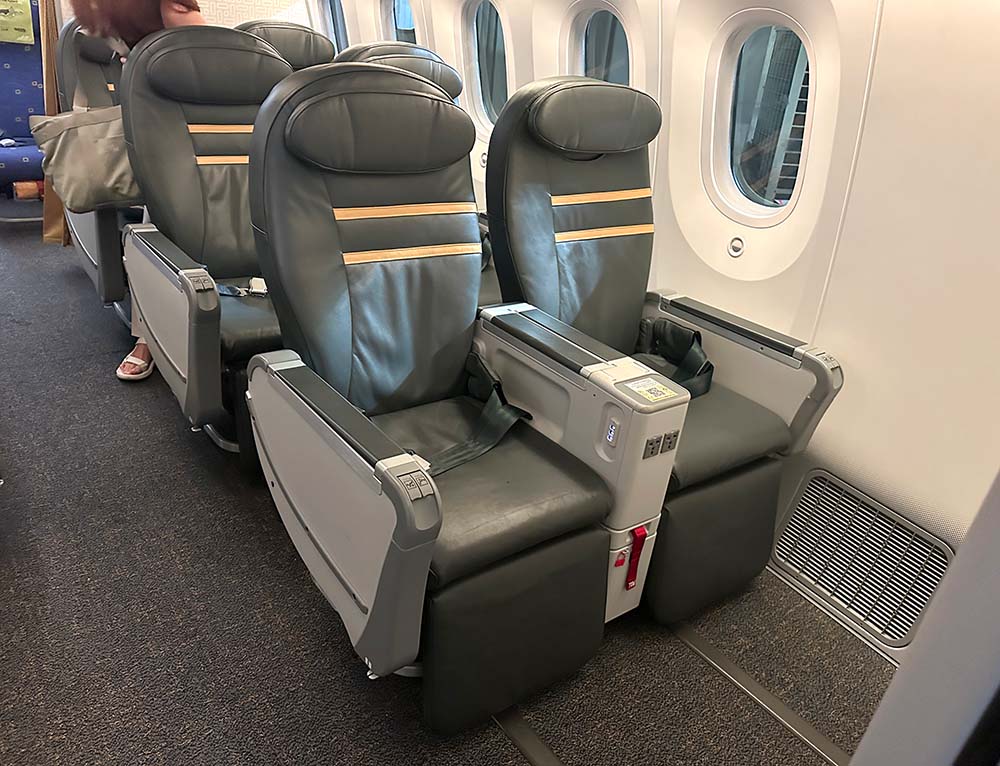
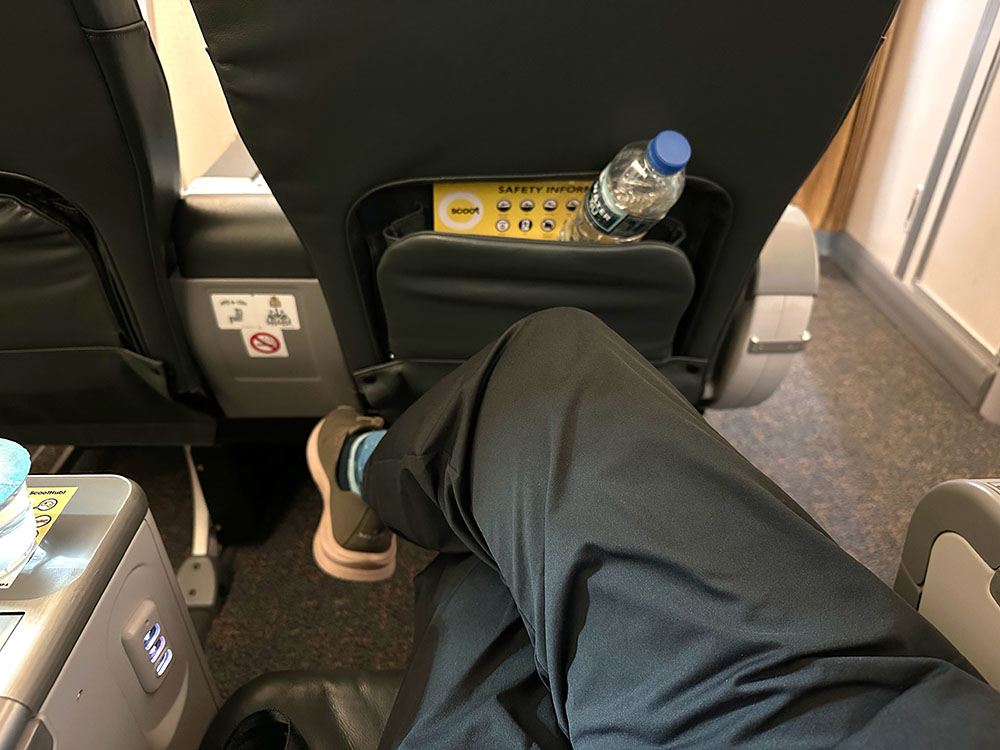
On the way back we were in the ‘Scoot in Silence’ seats, so it’s the LCC version of Premium Economy, though it basically just means that you’re in a more sectioned-off area where no children area allowed, so generally it’s a bit quieter and you’re right behind the Scoot Plus seats.
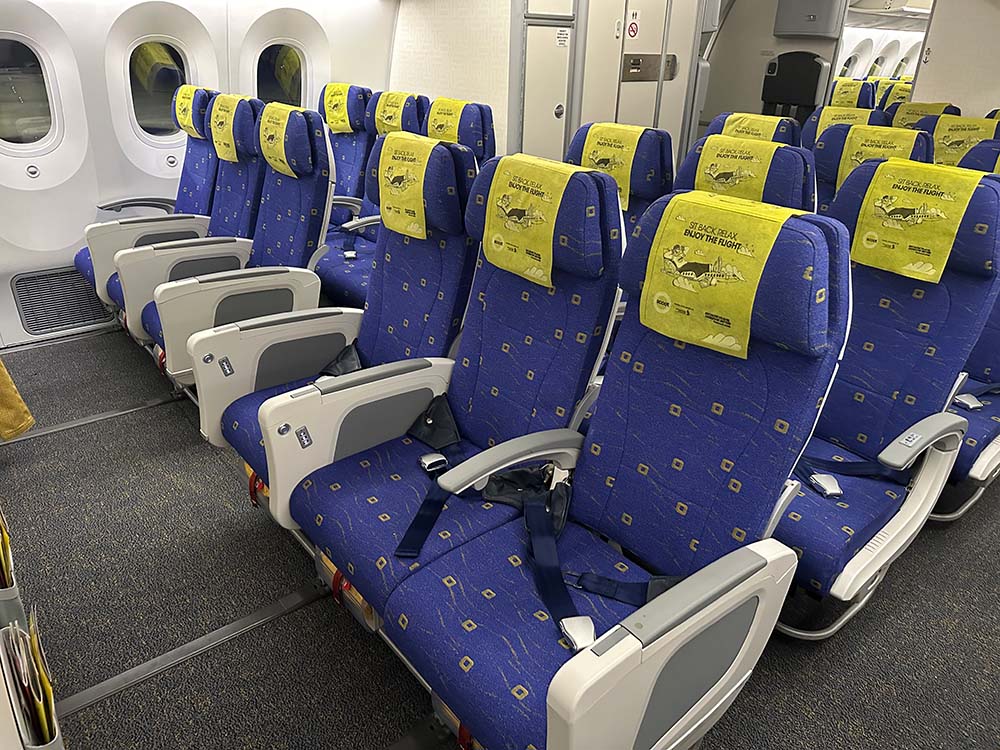
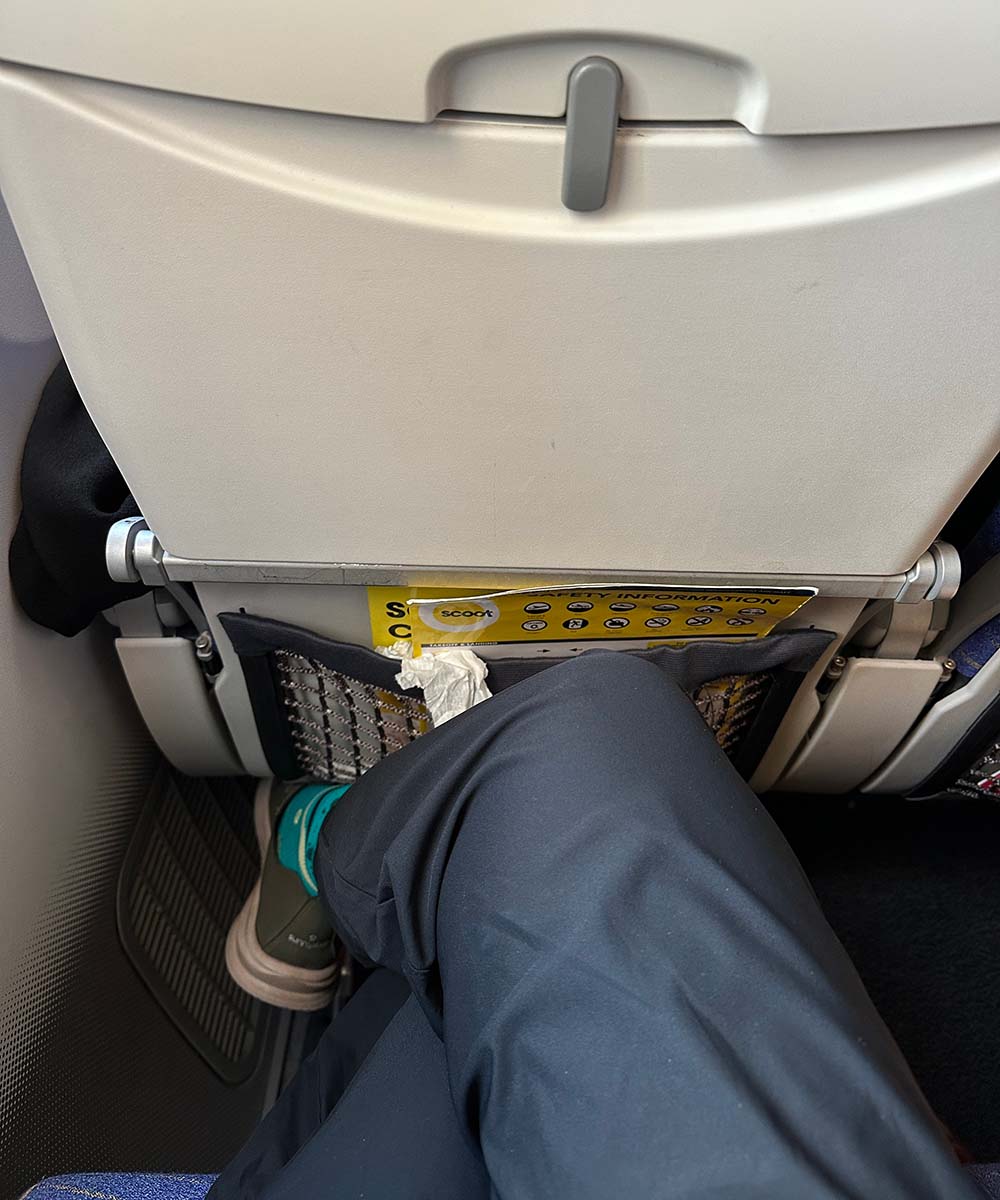
Check out Scoot’s flight schedule and prices from Singapore to Vienna
I visited Vienna with Austria Tourism, Scoot and Small Luxury Hotels of the World on a media trip.
Have you been to Vienna? Tell me what other museums I need to check out in future!


